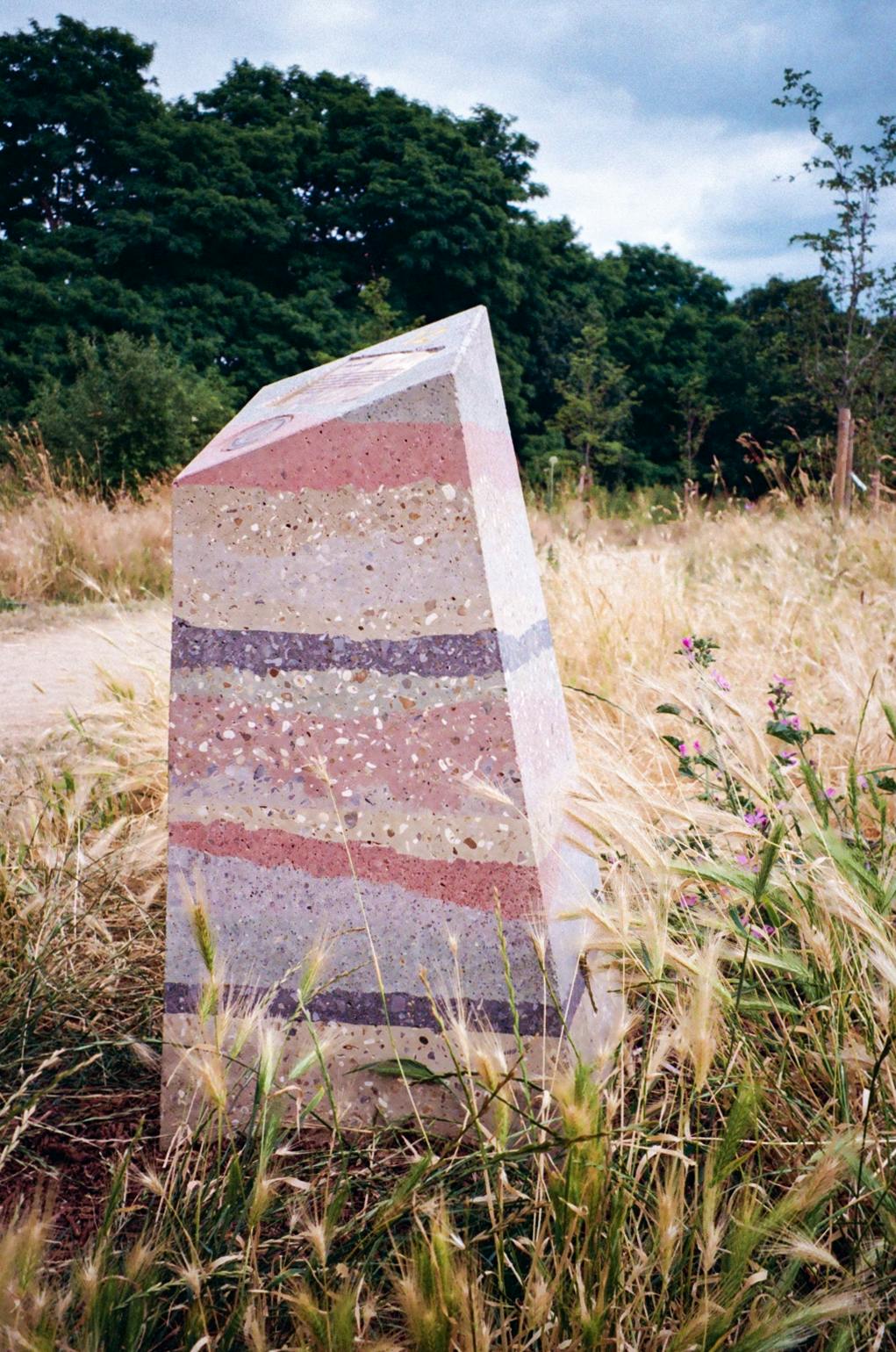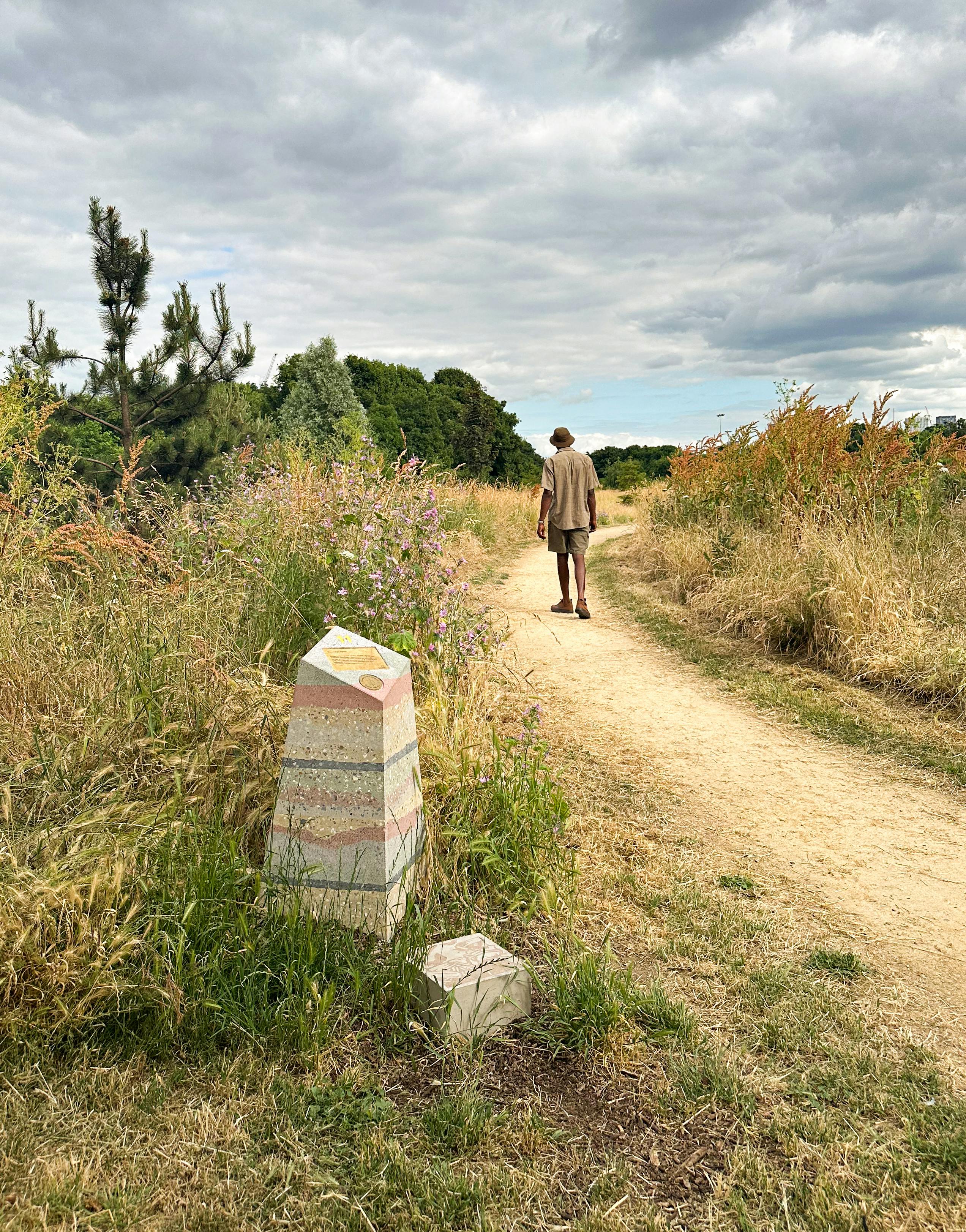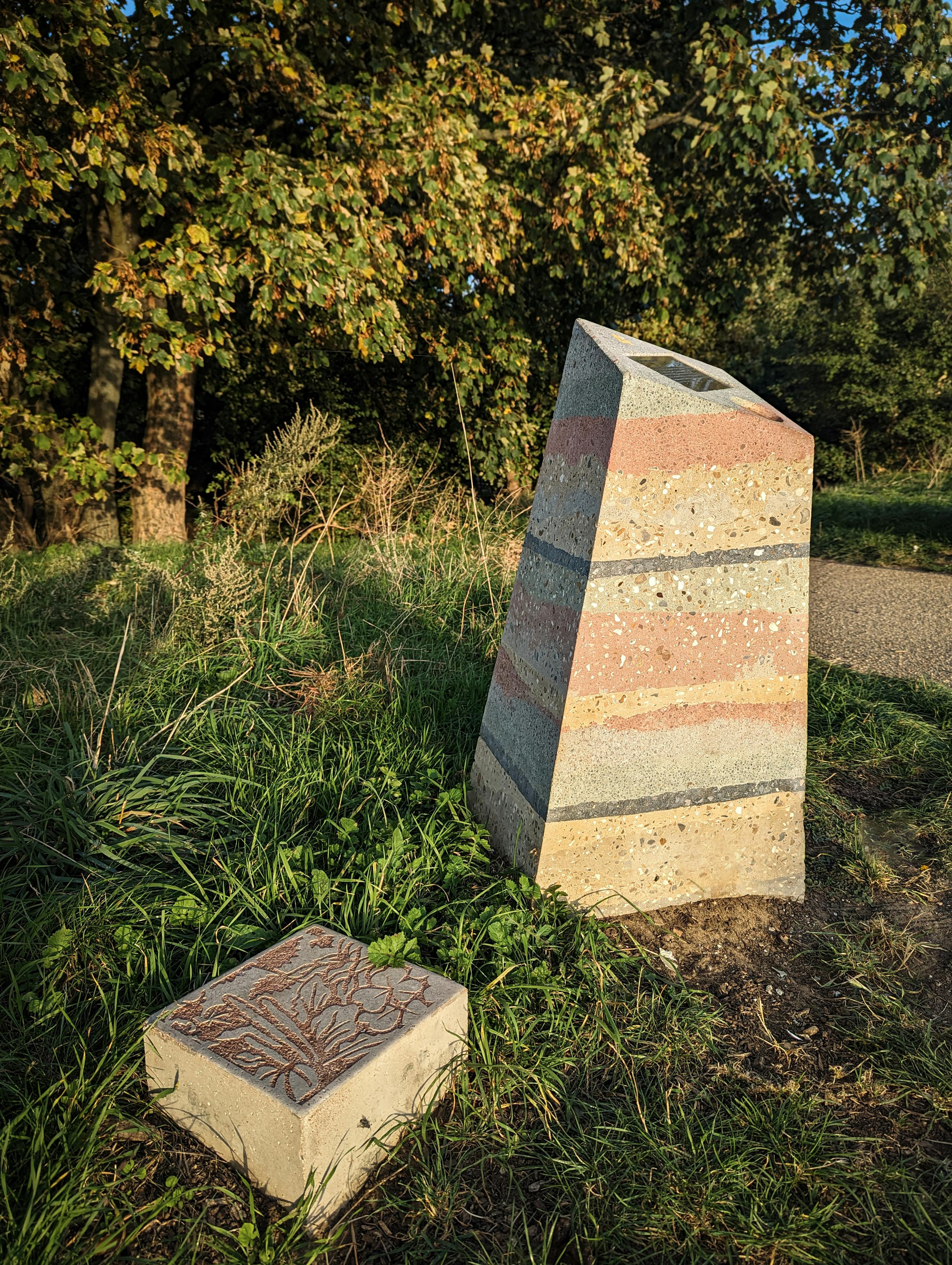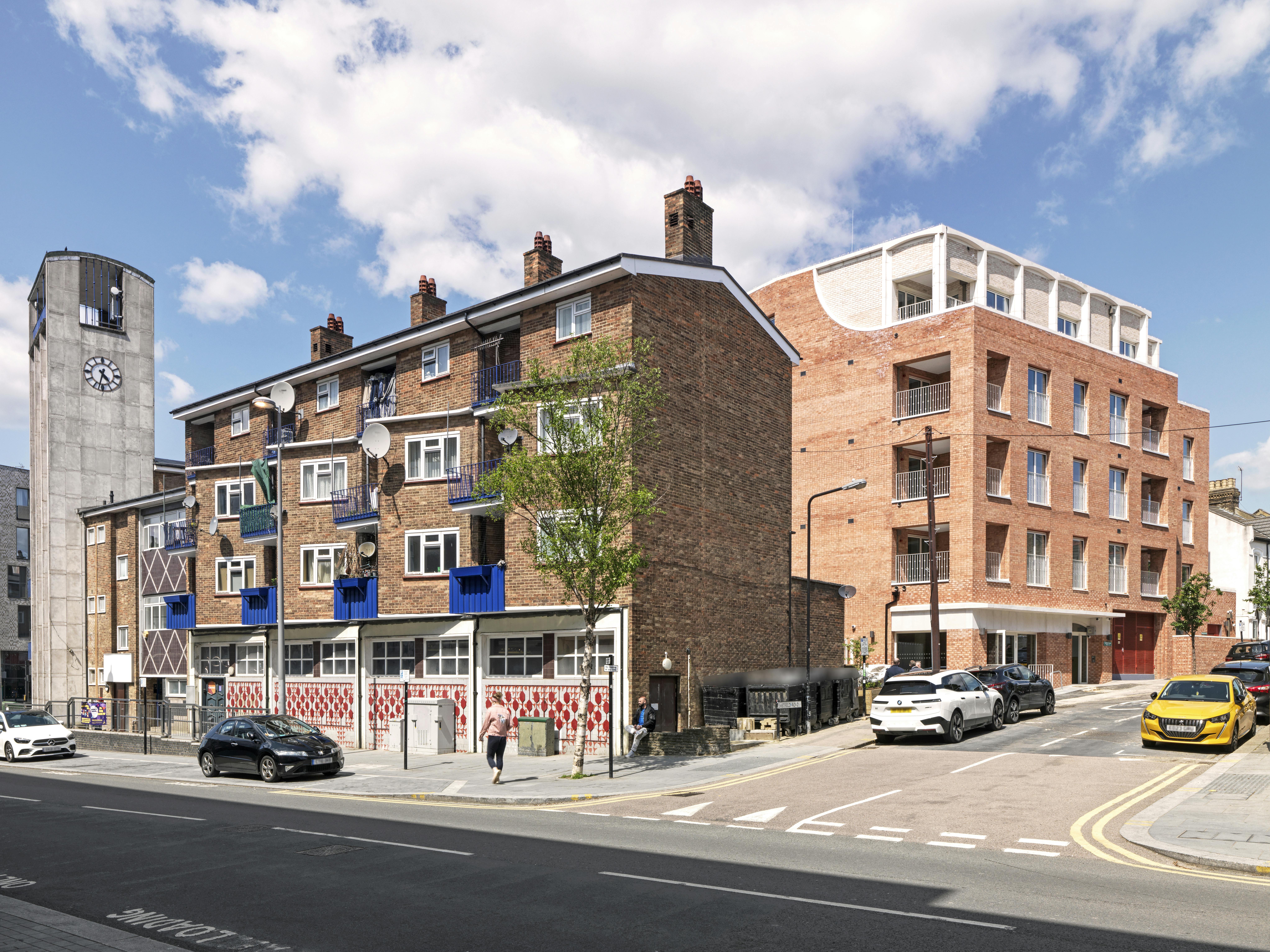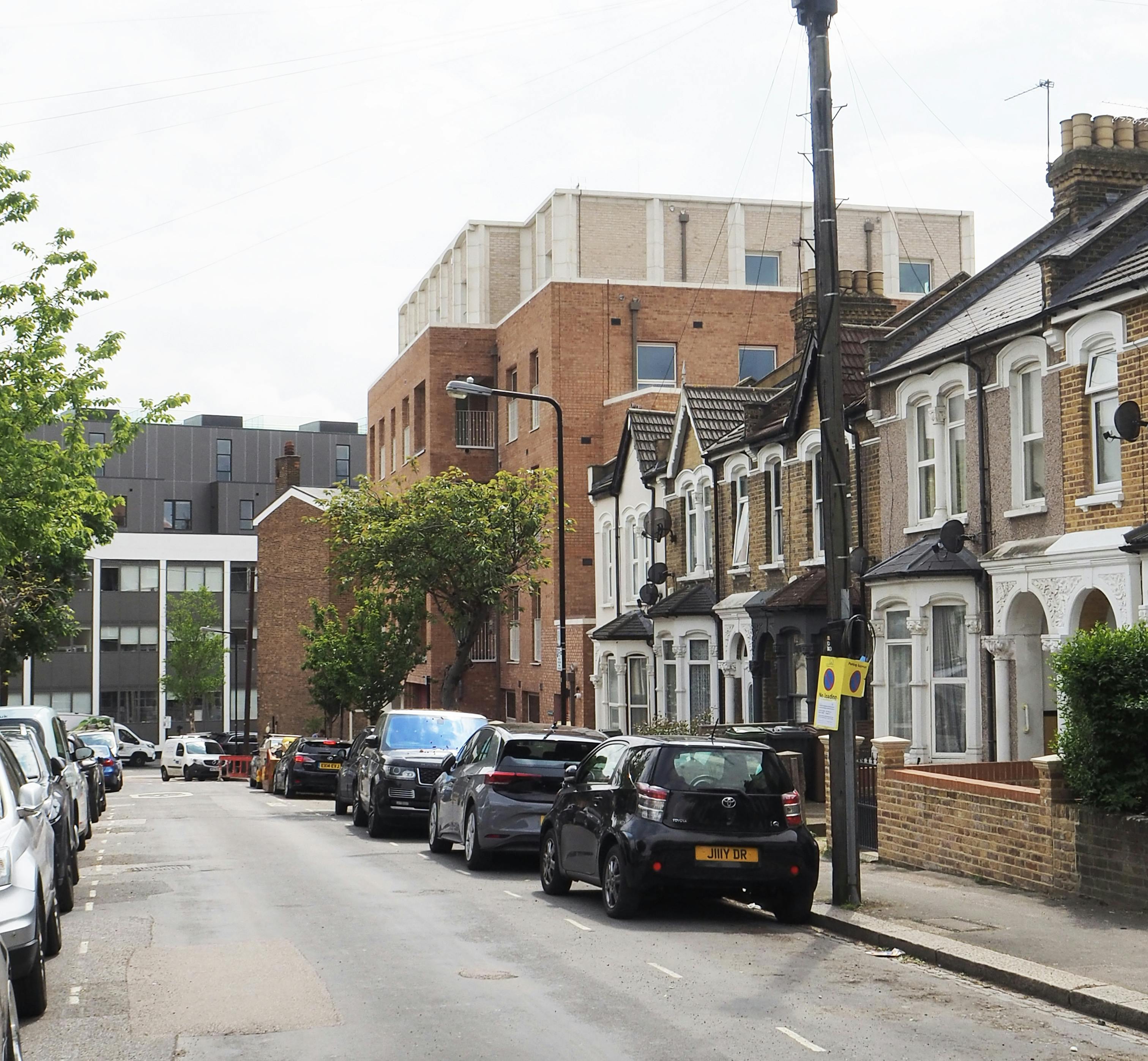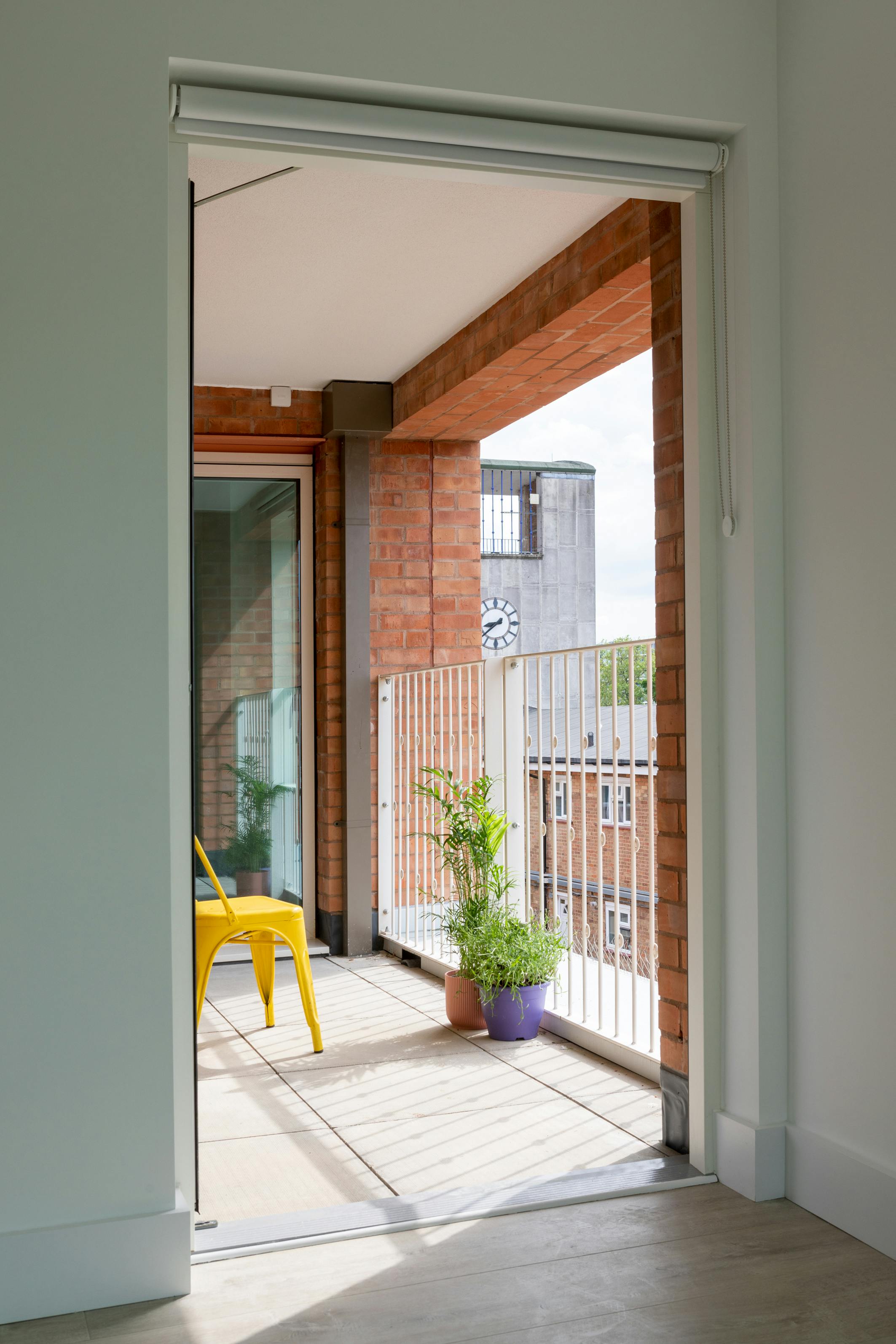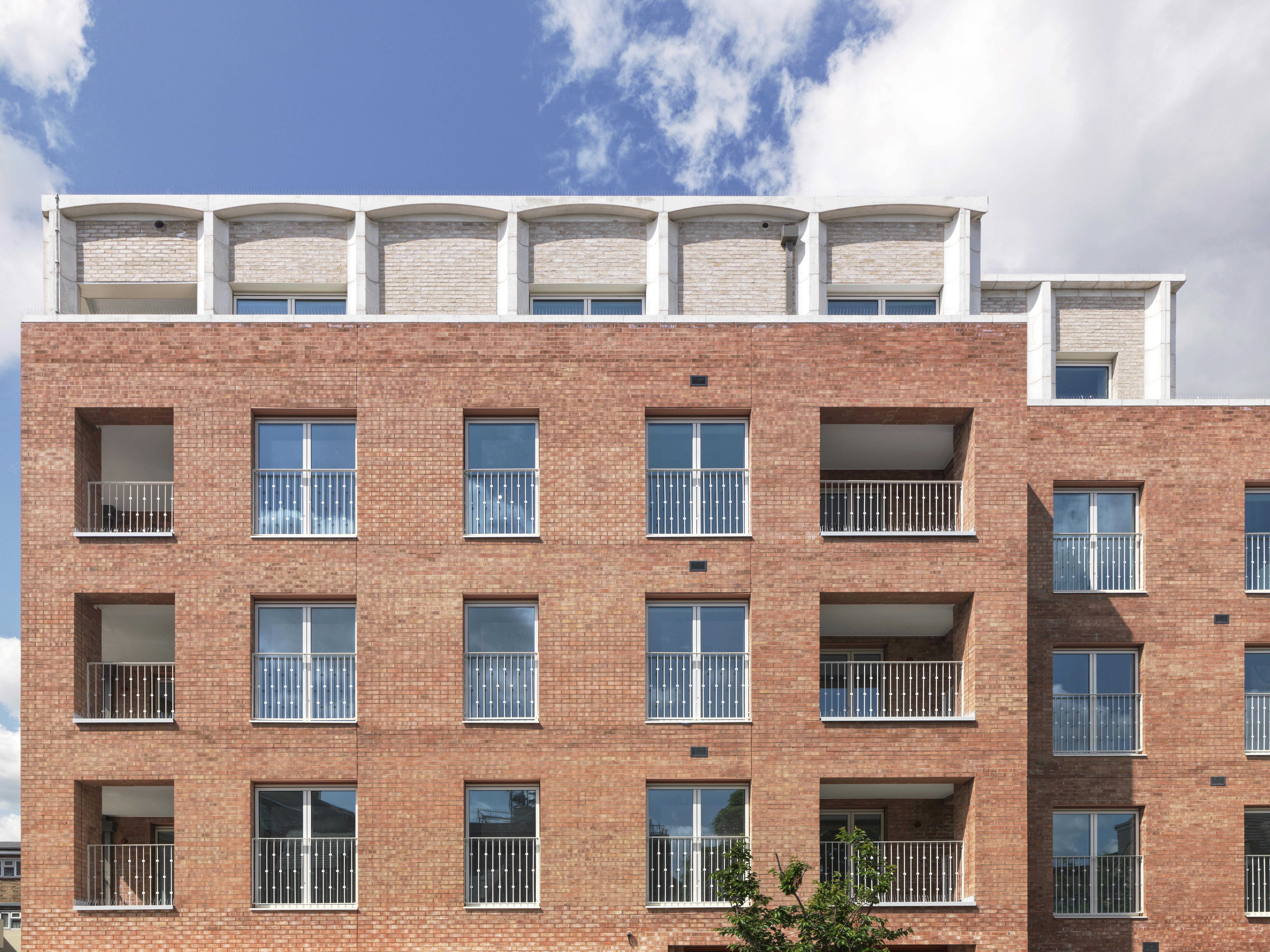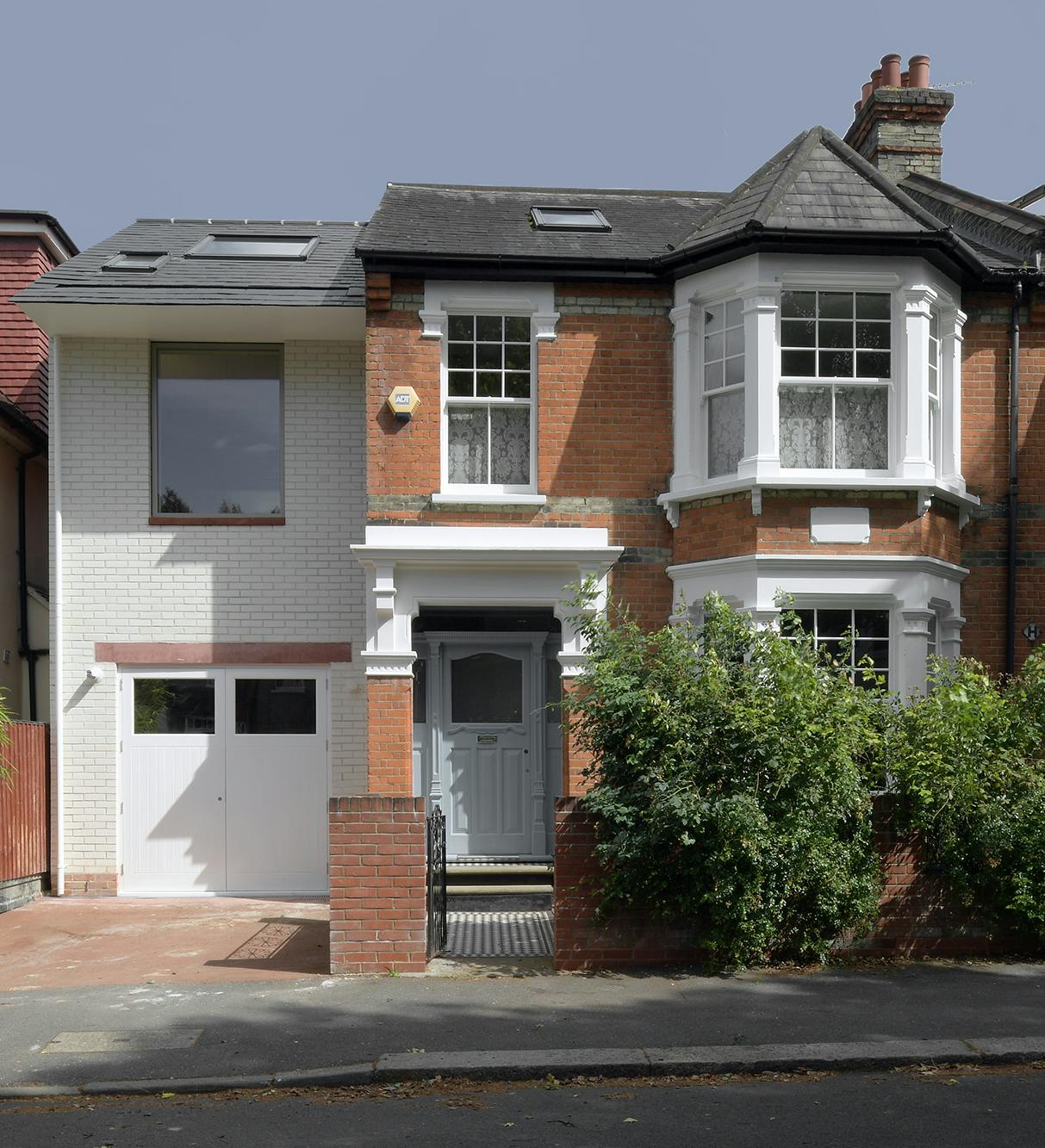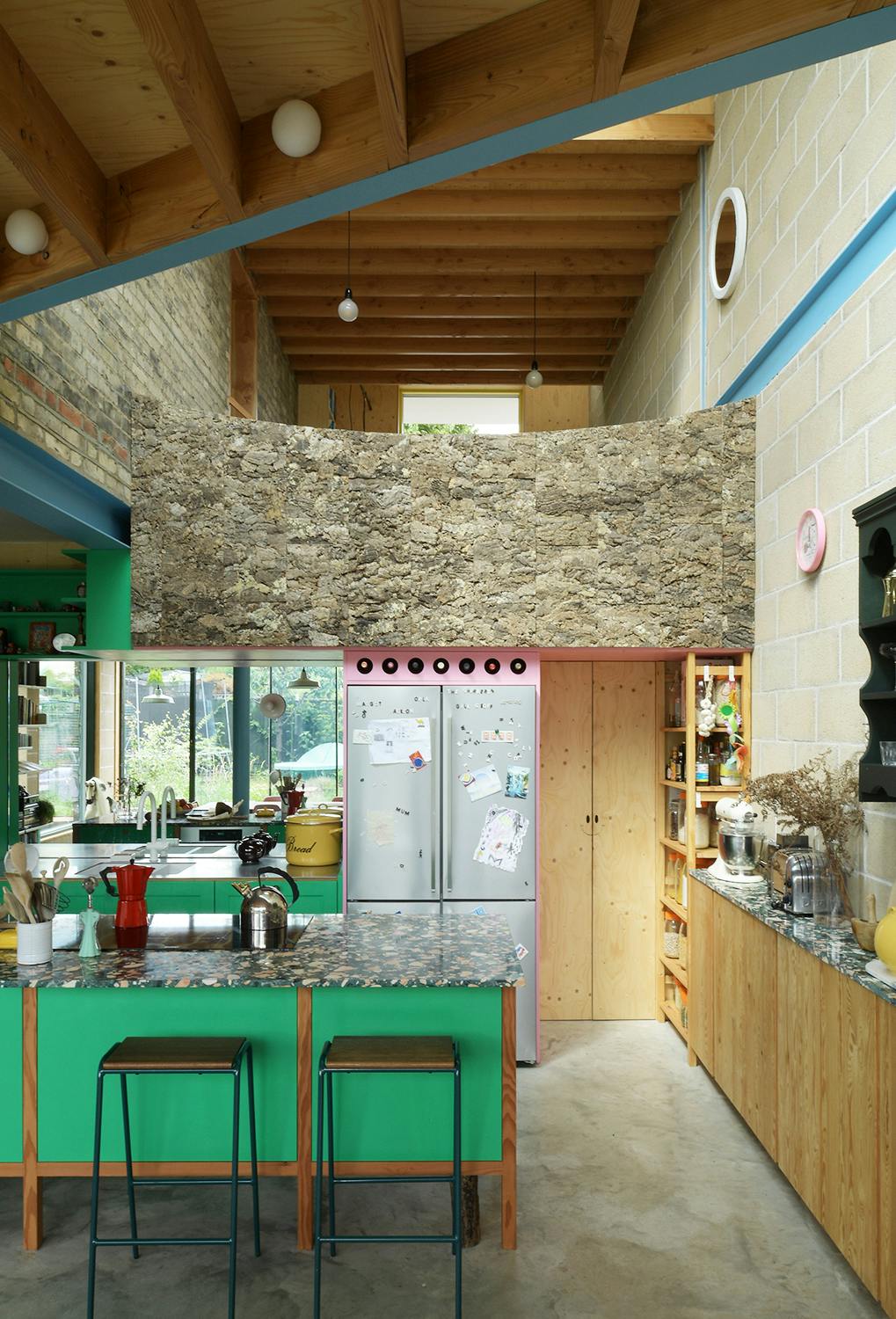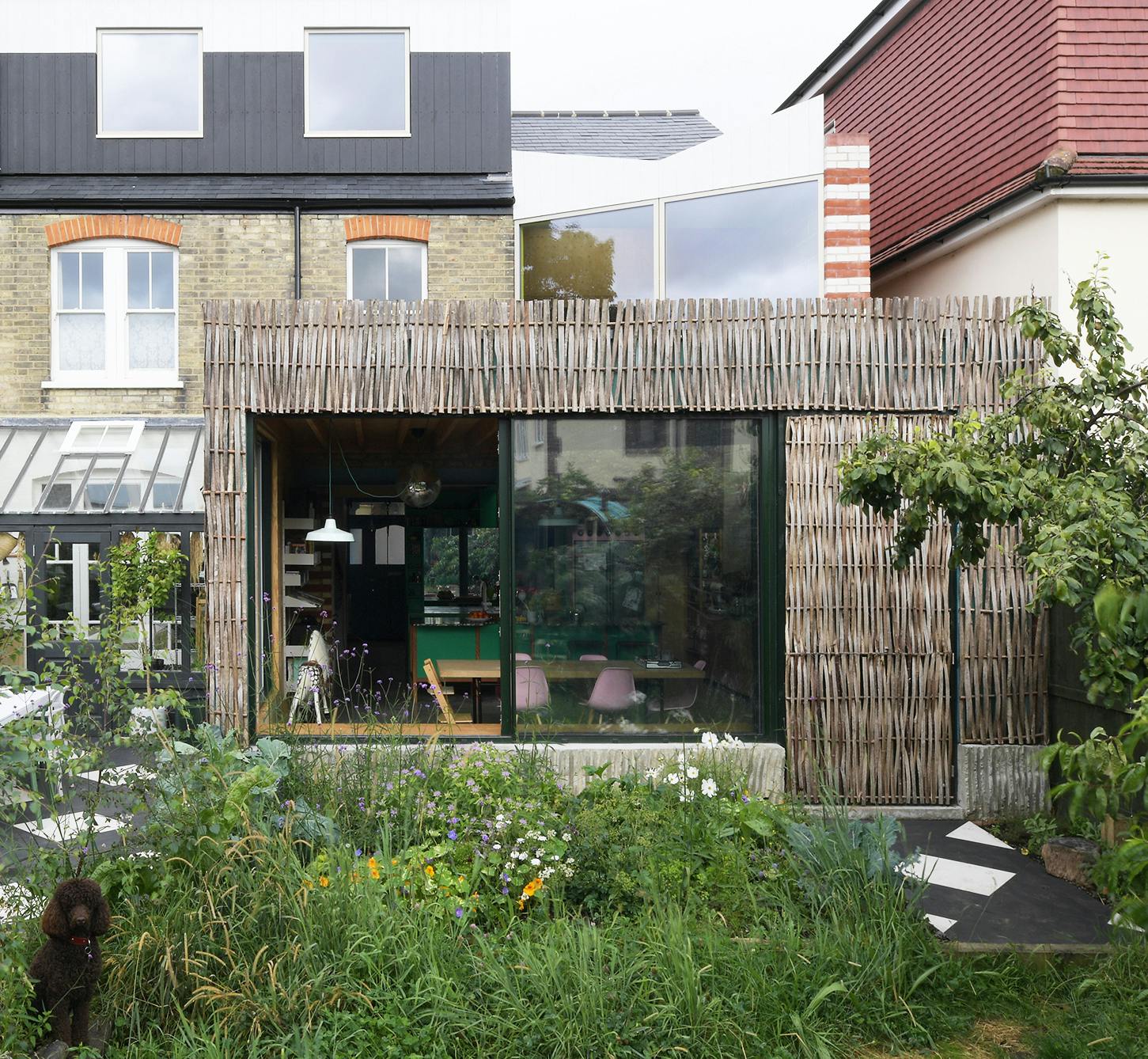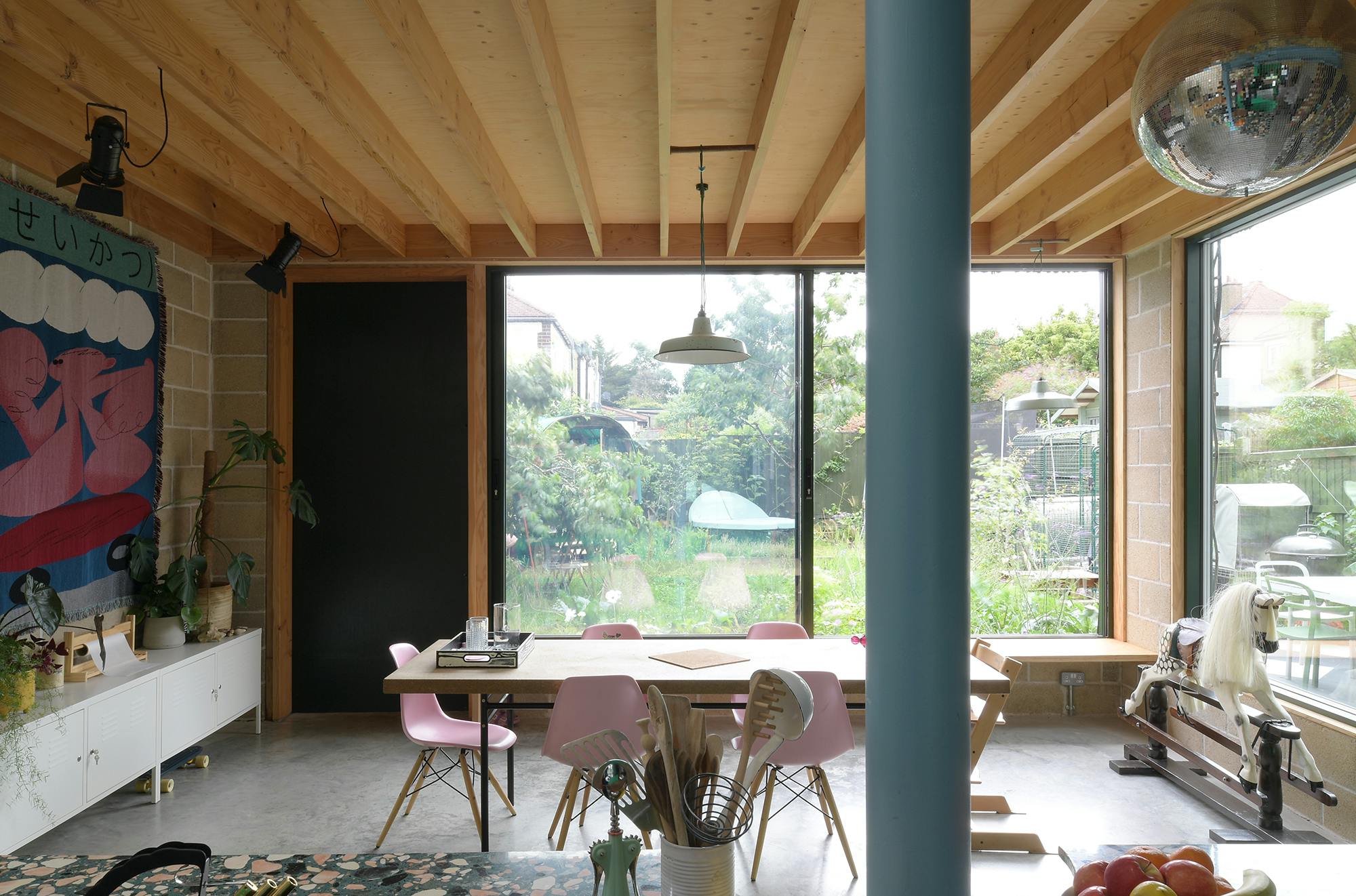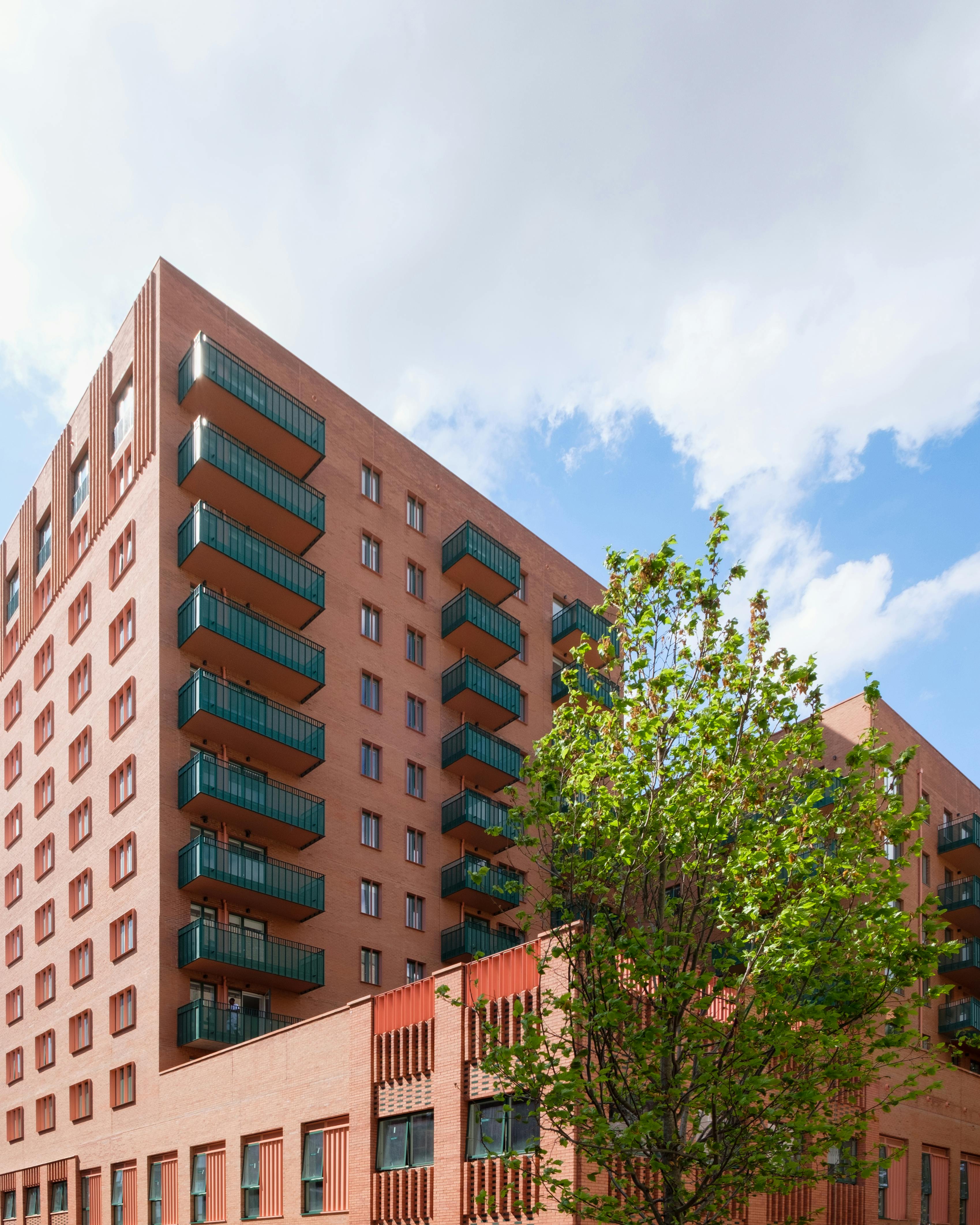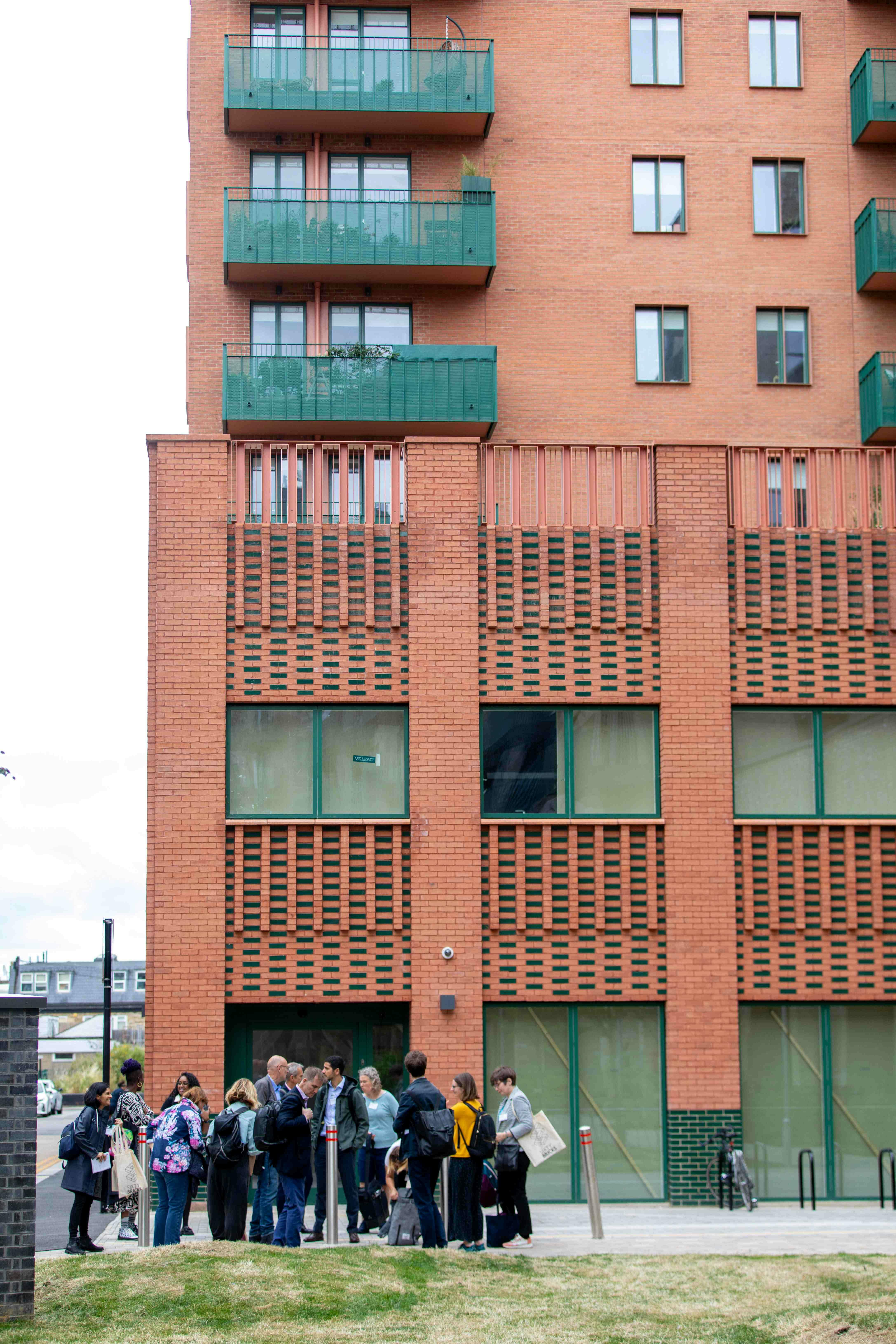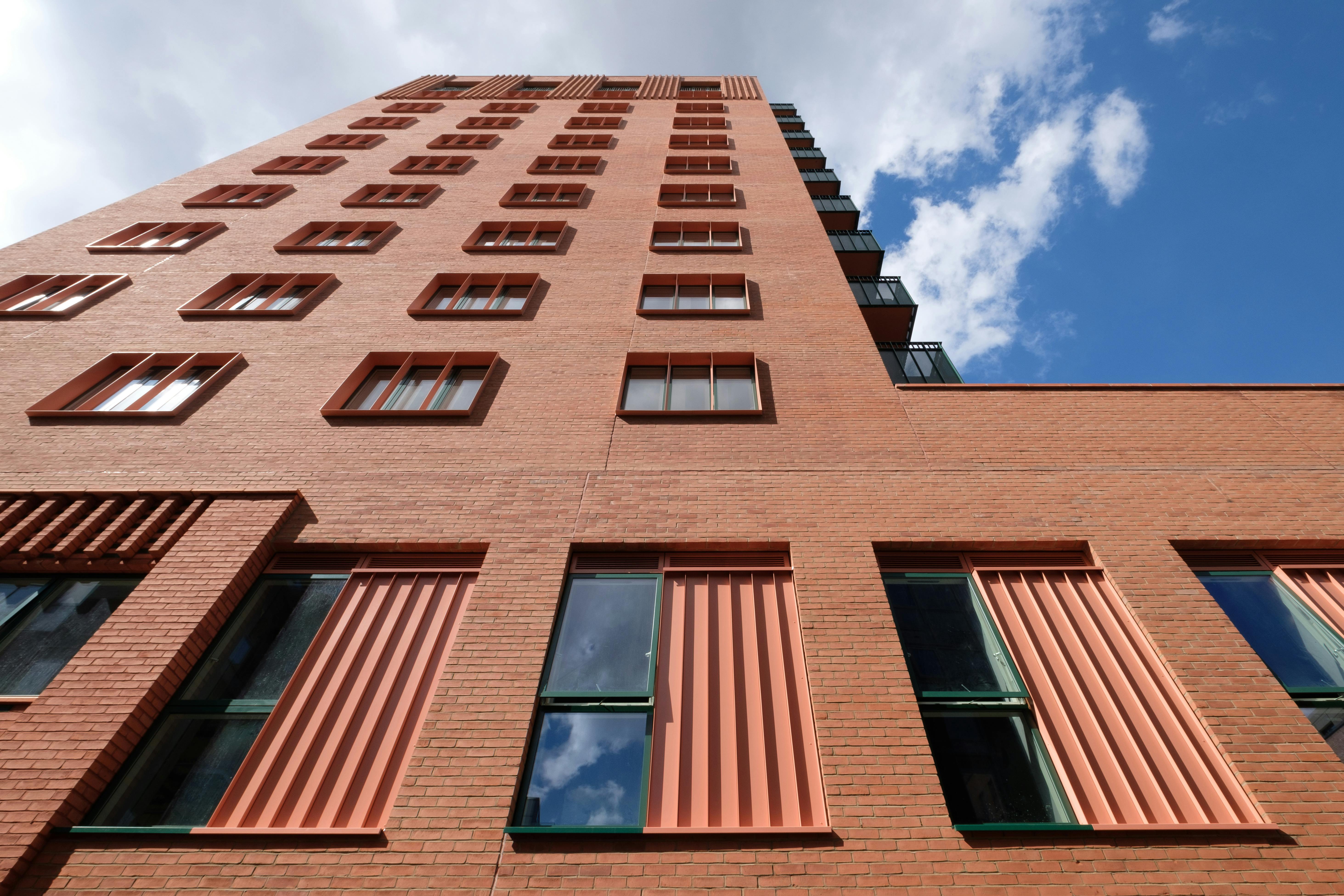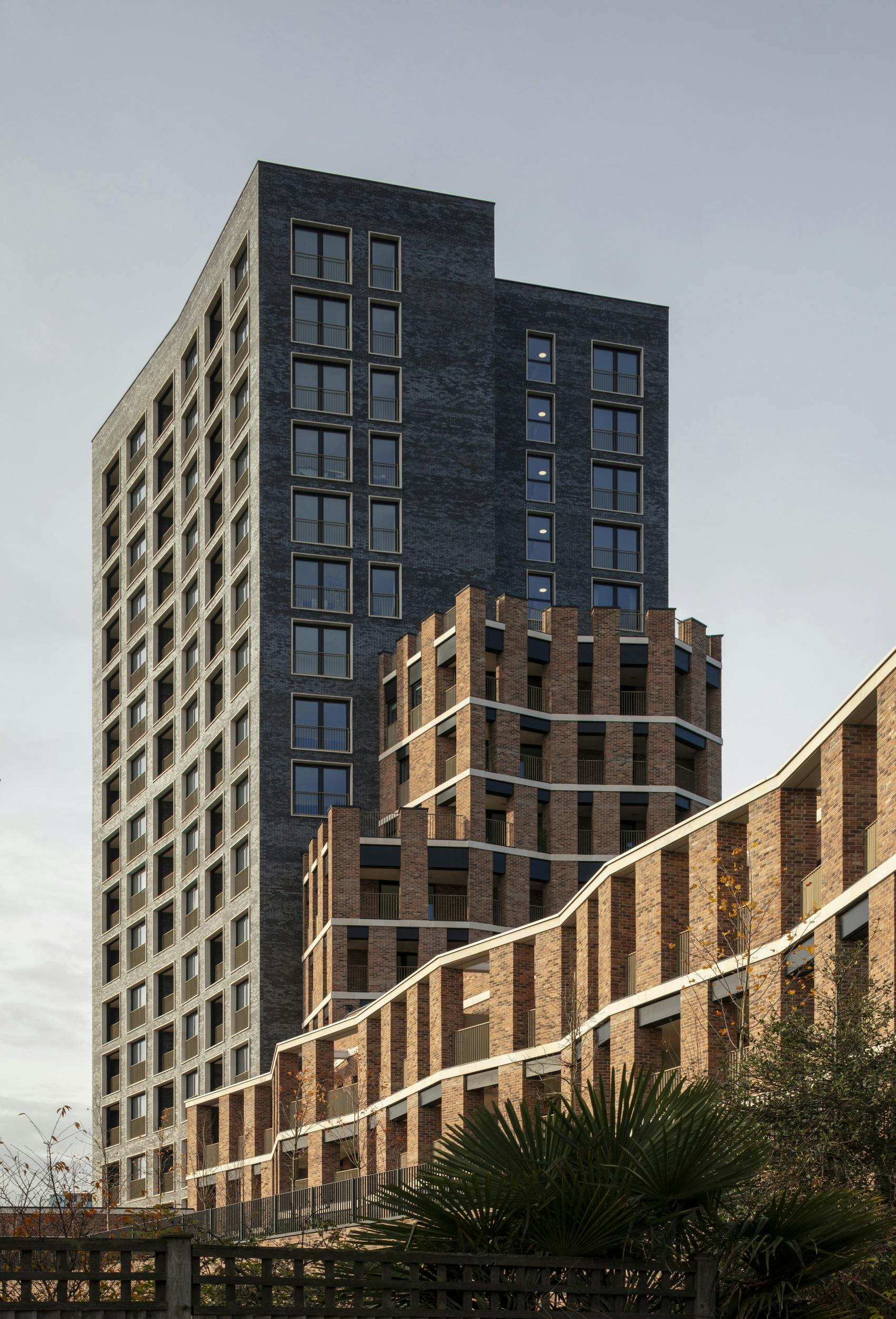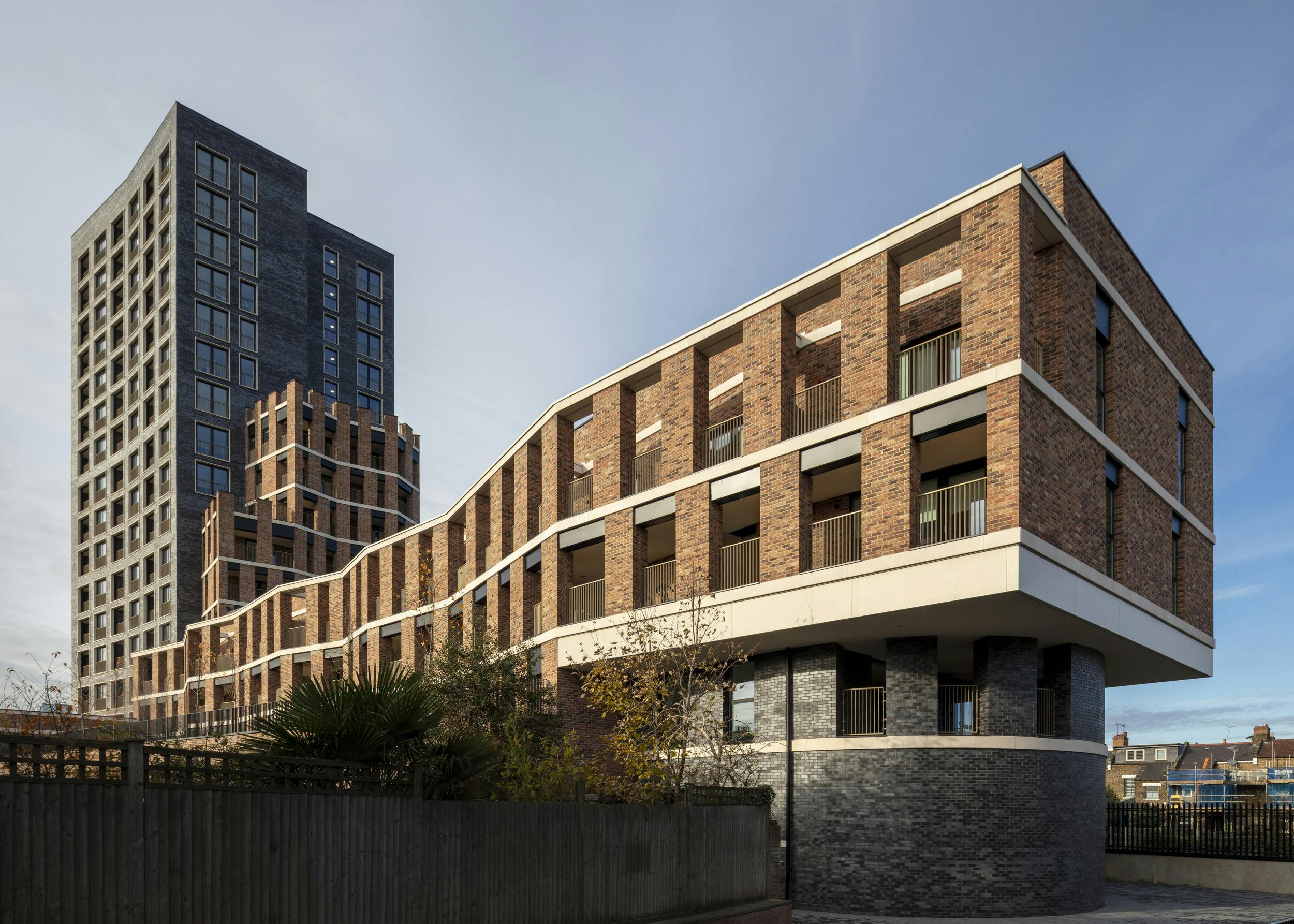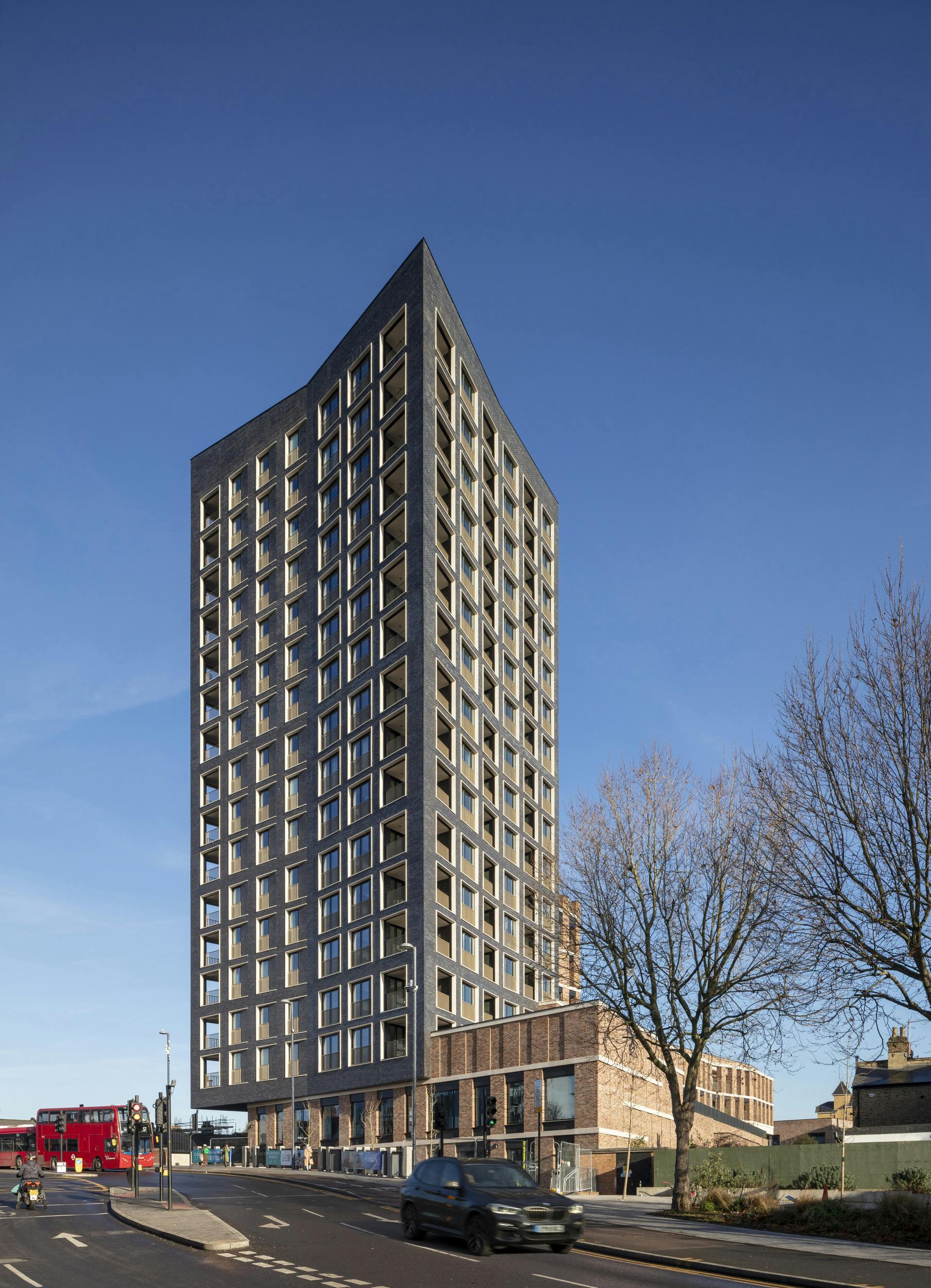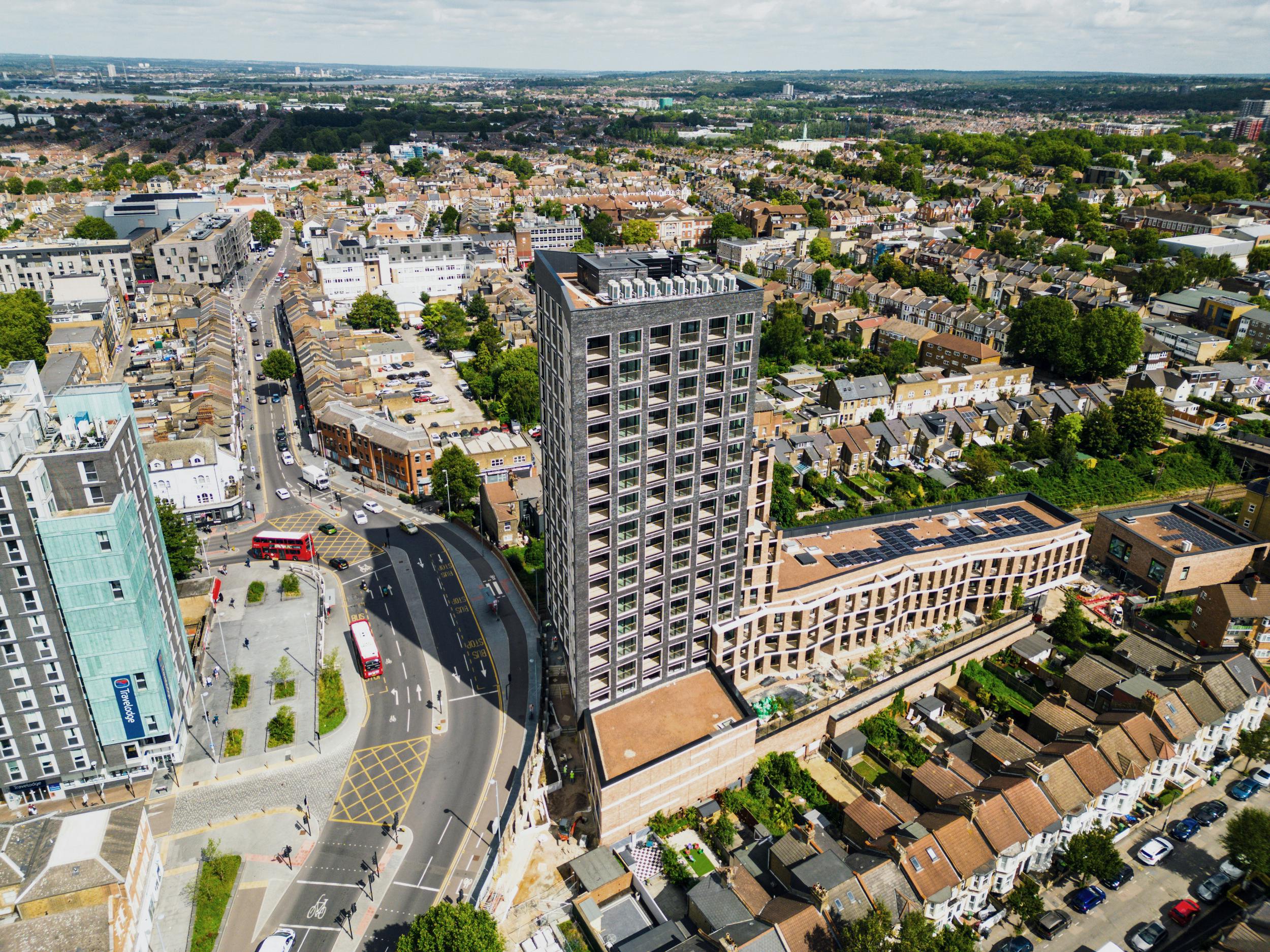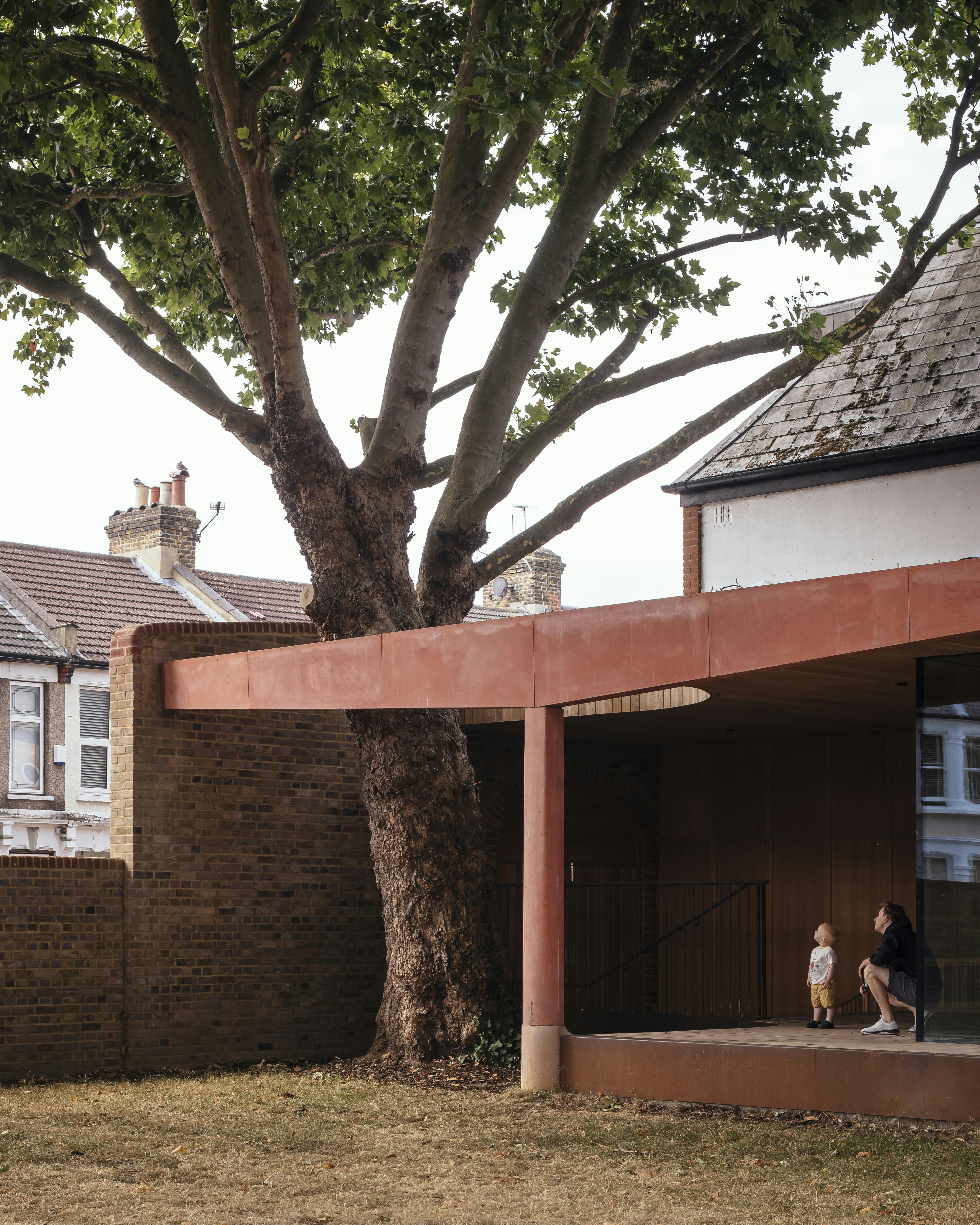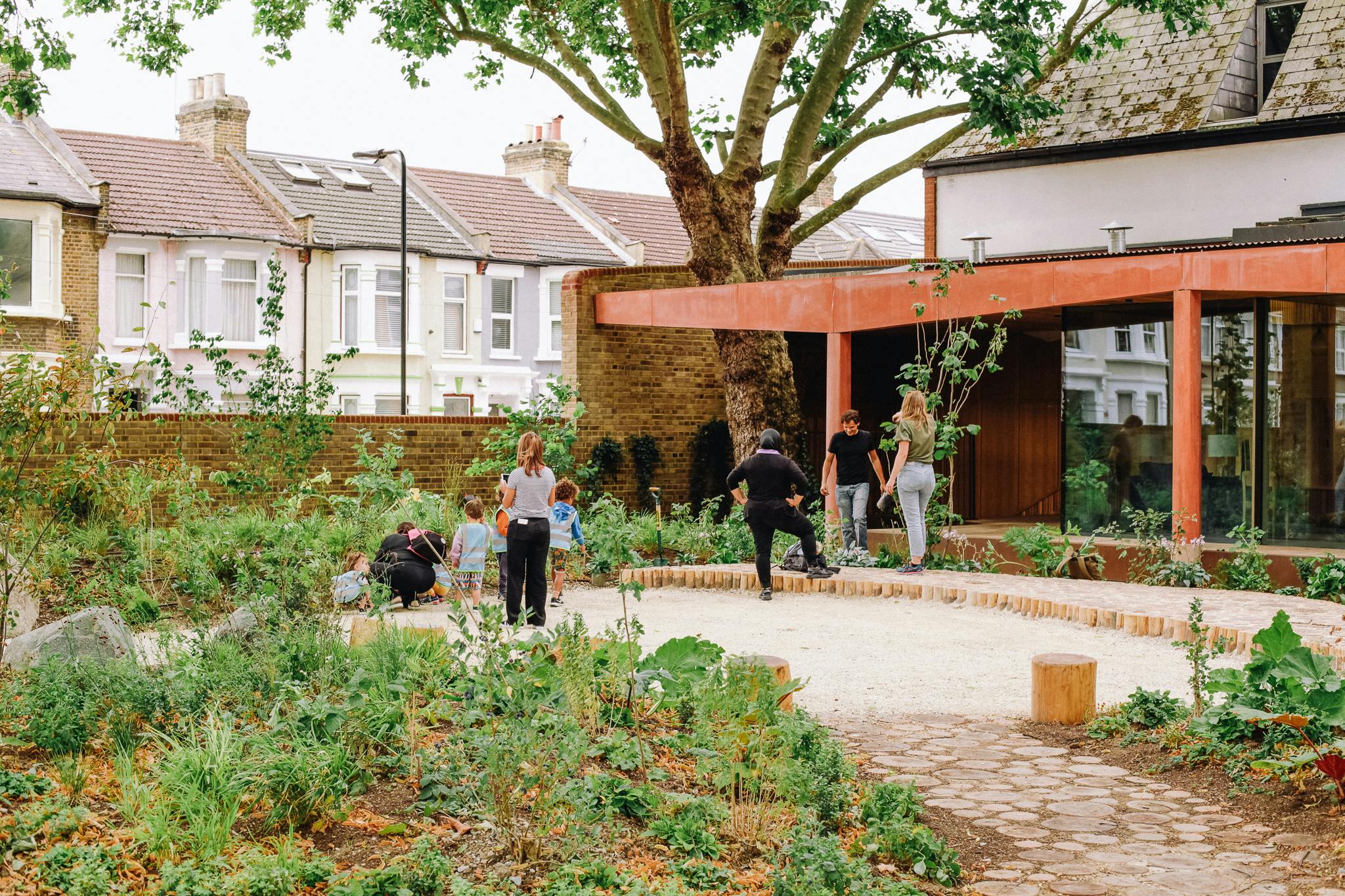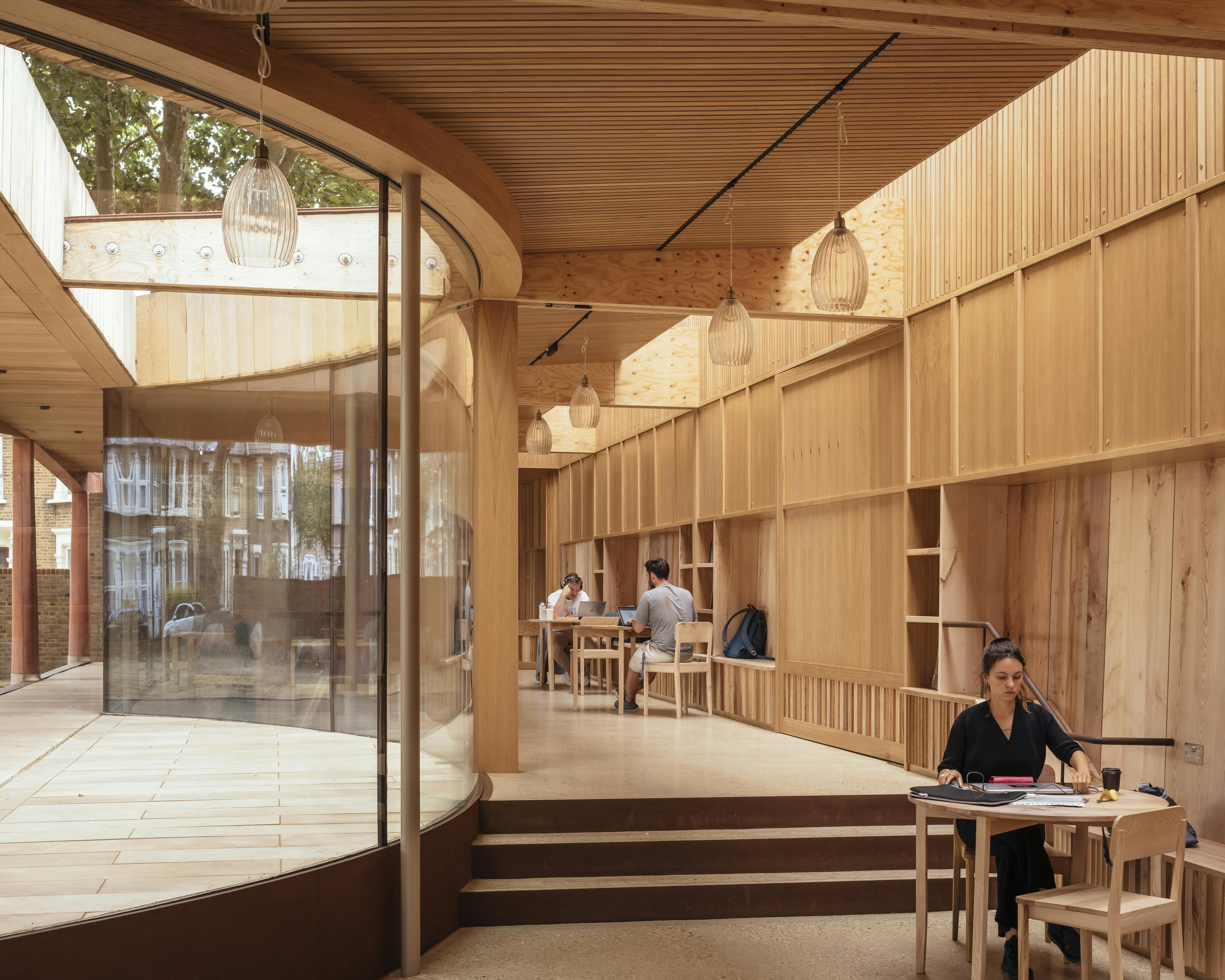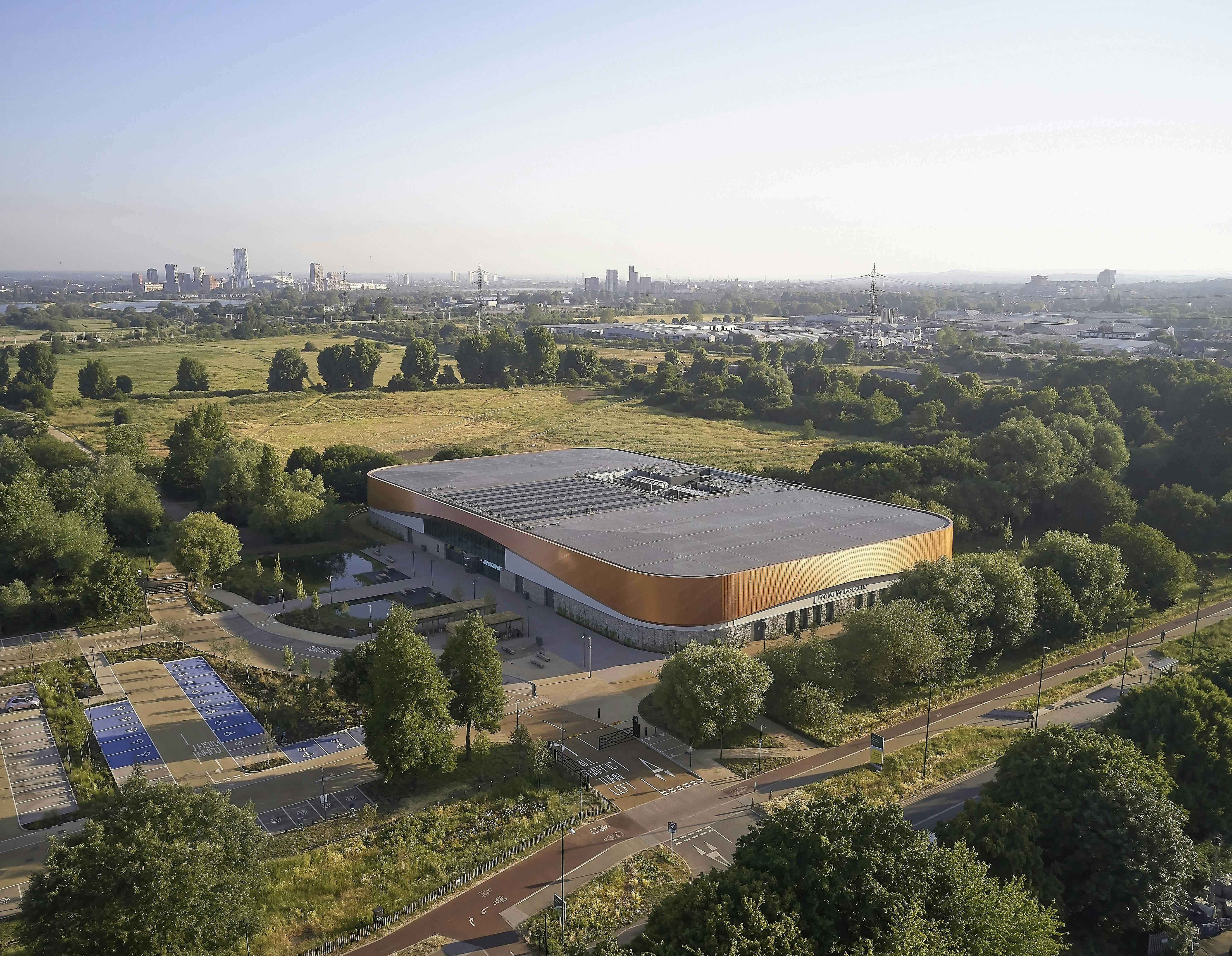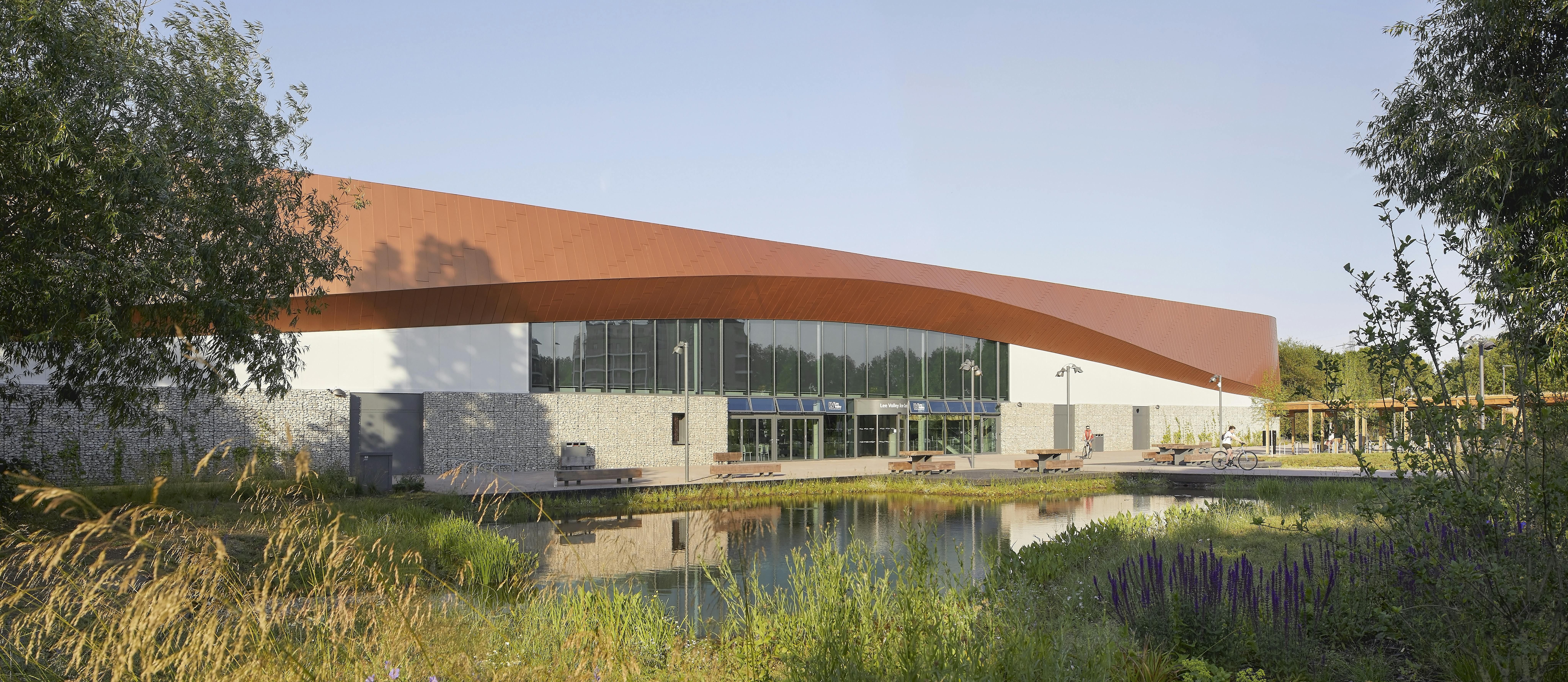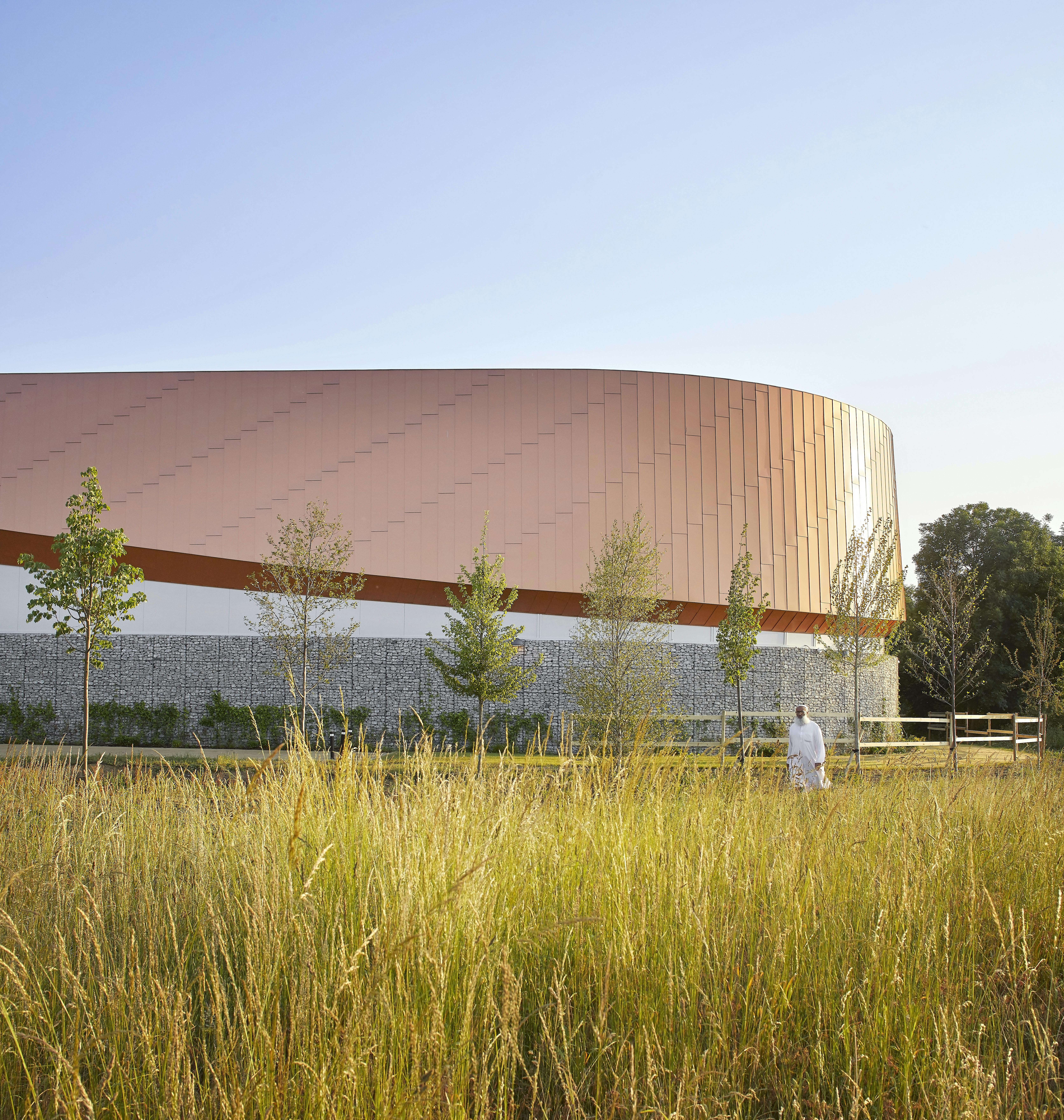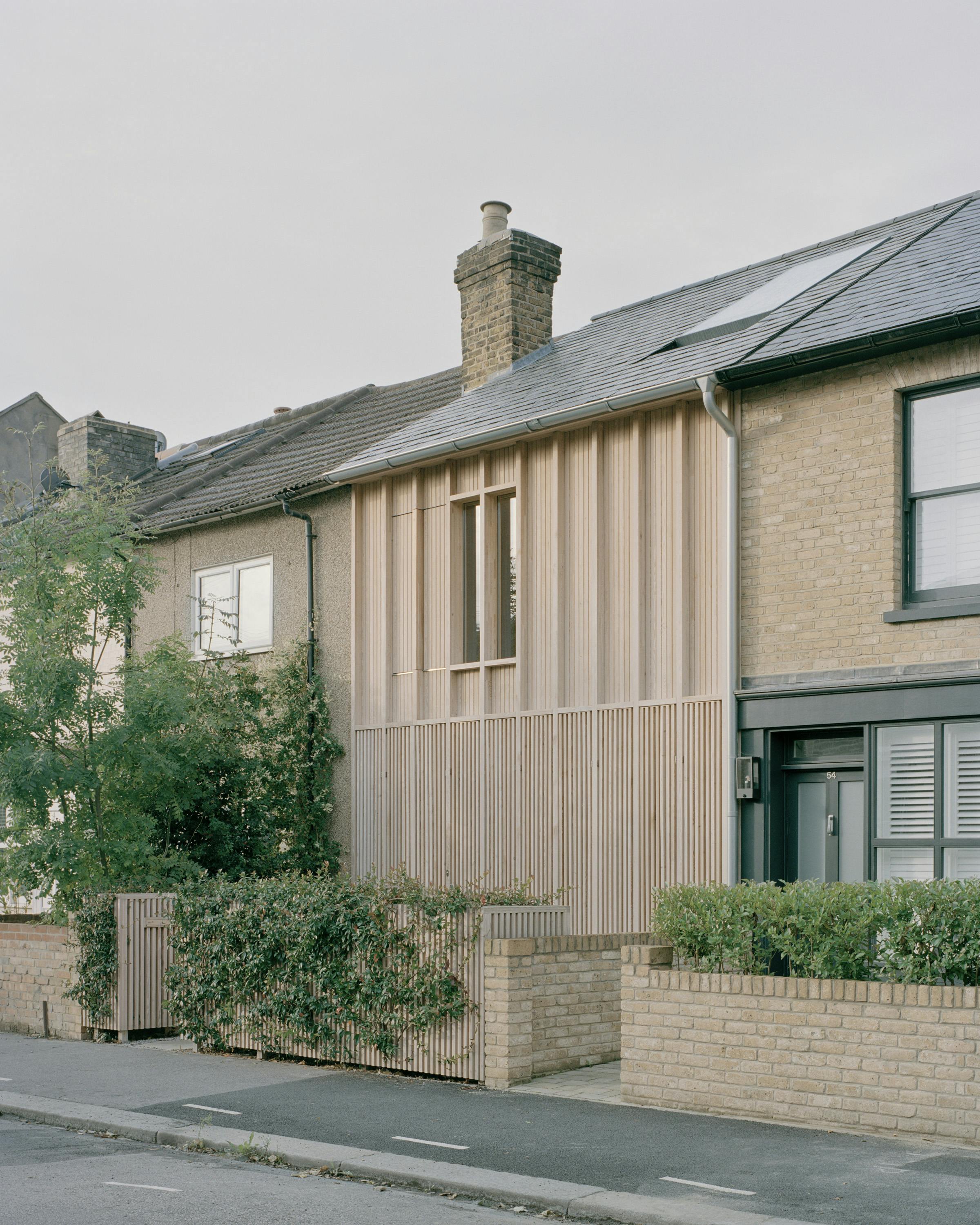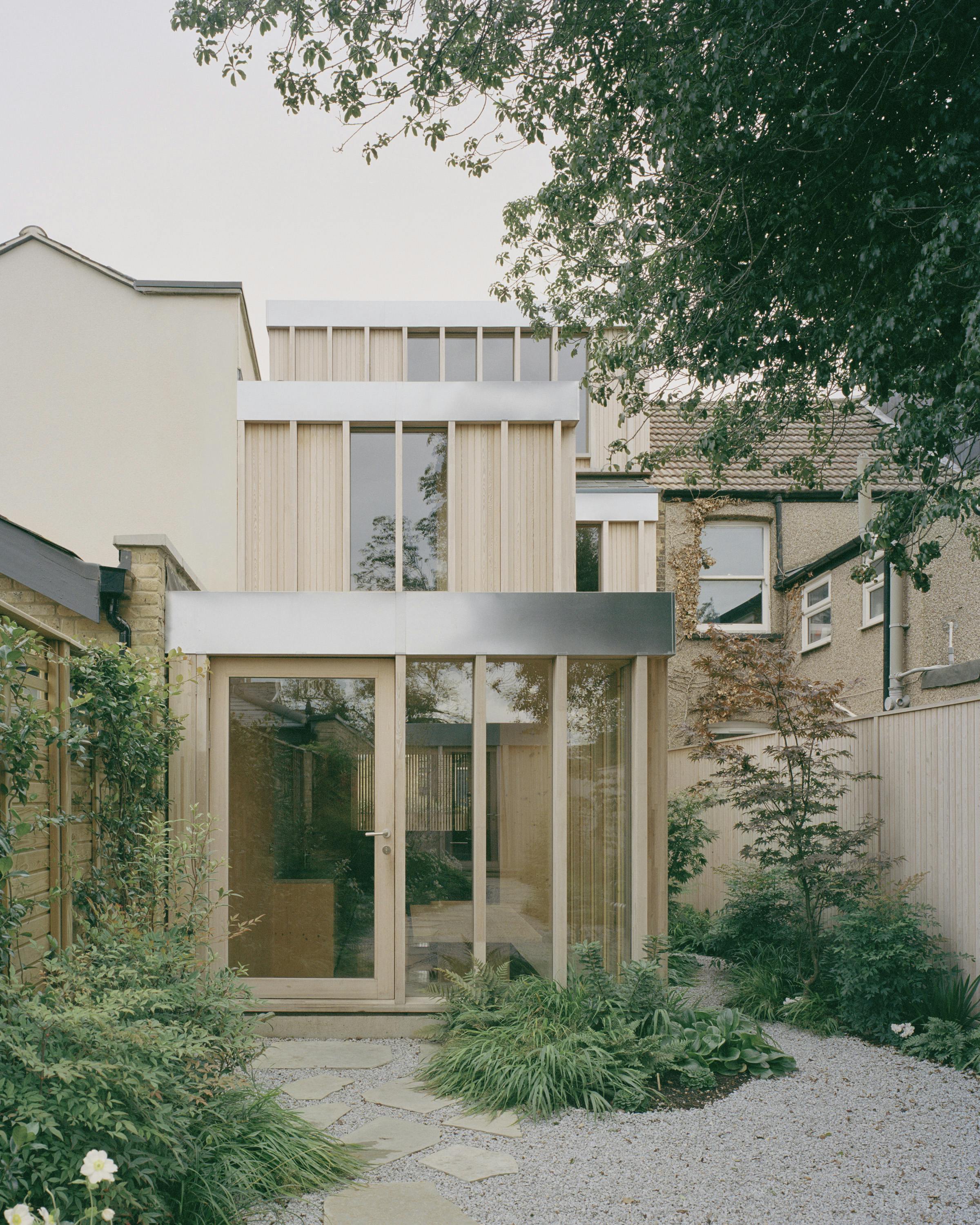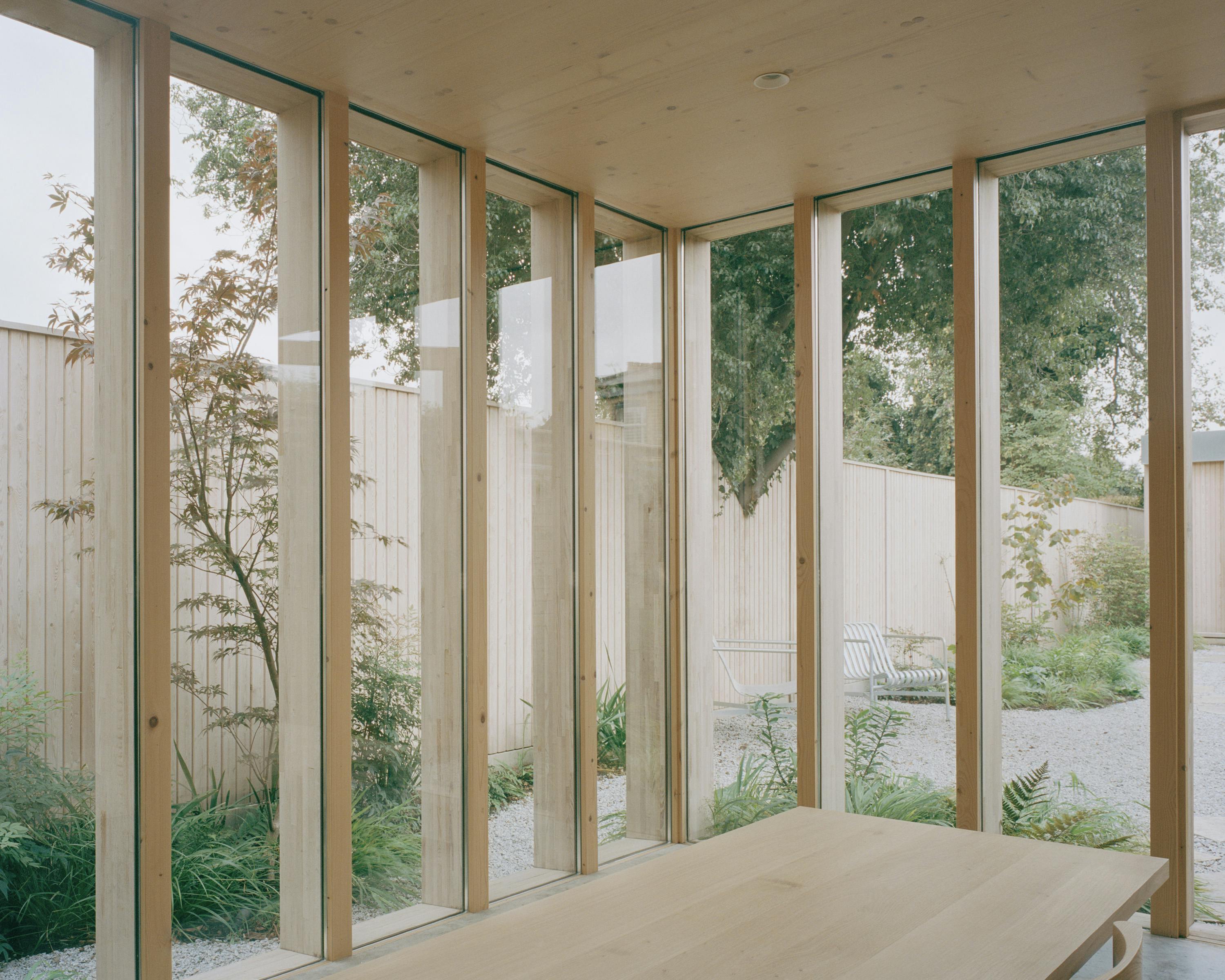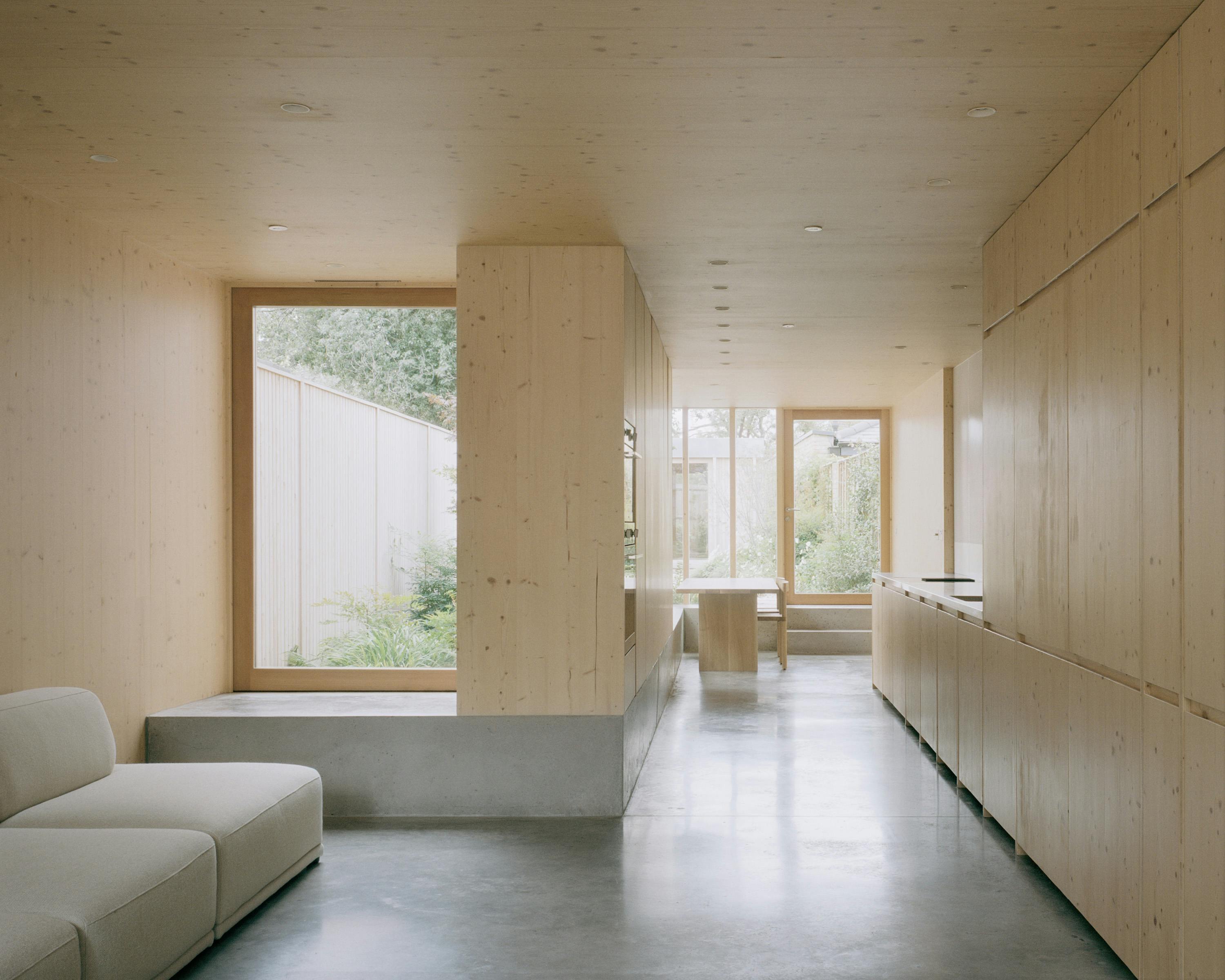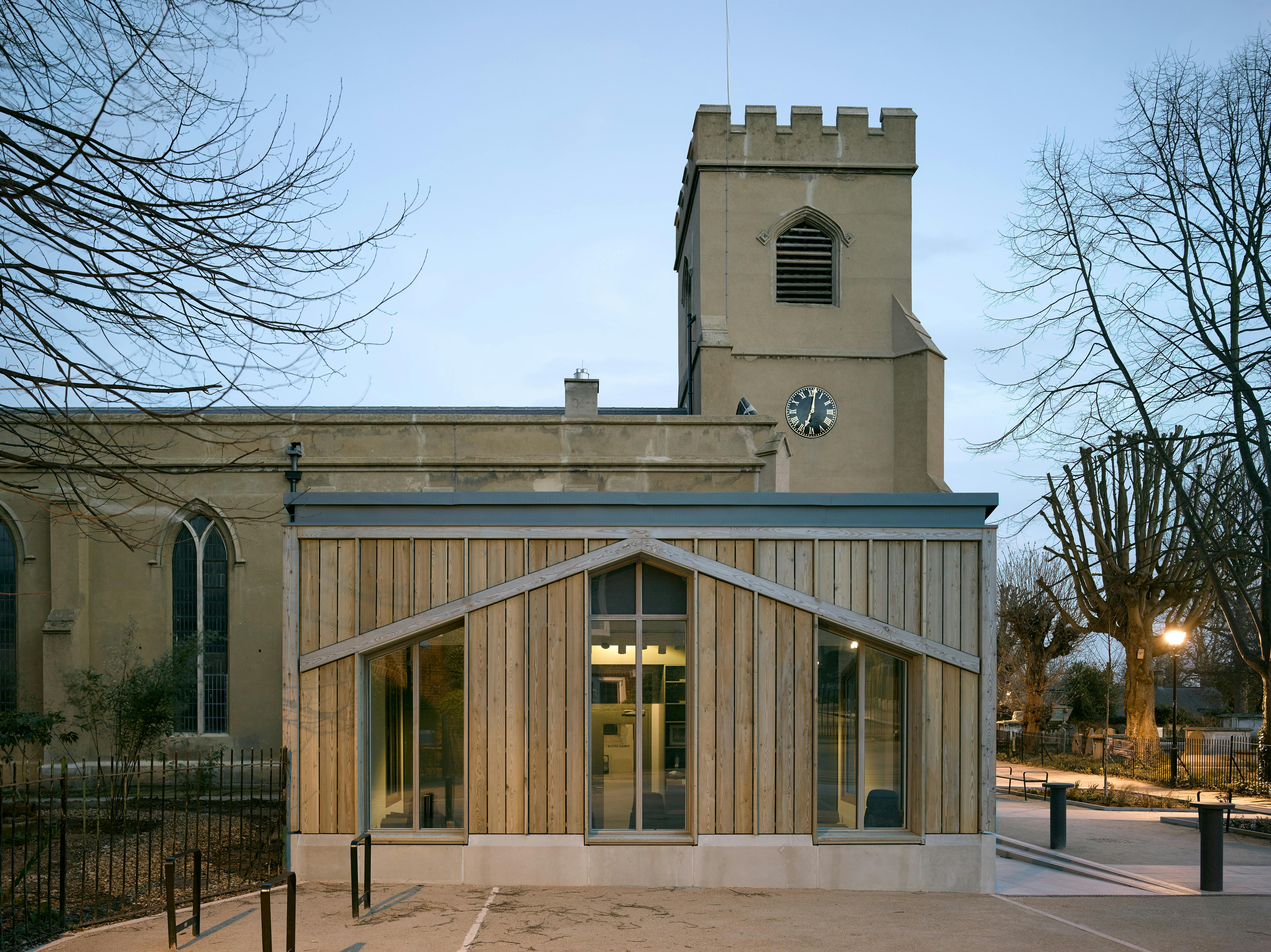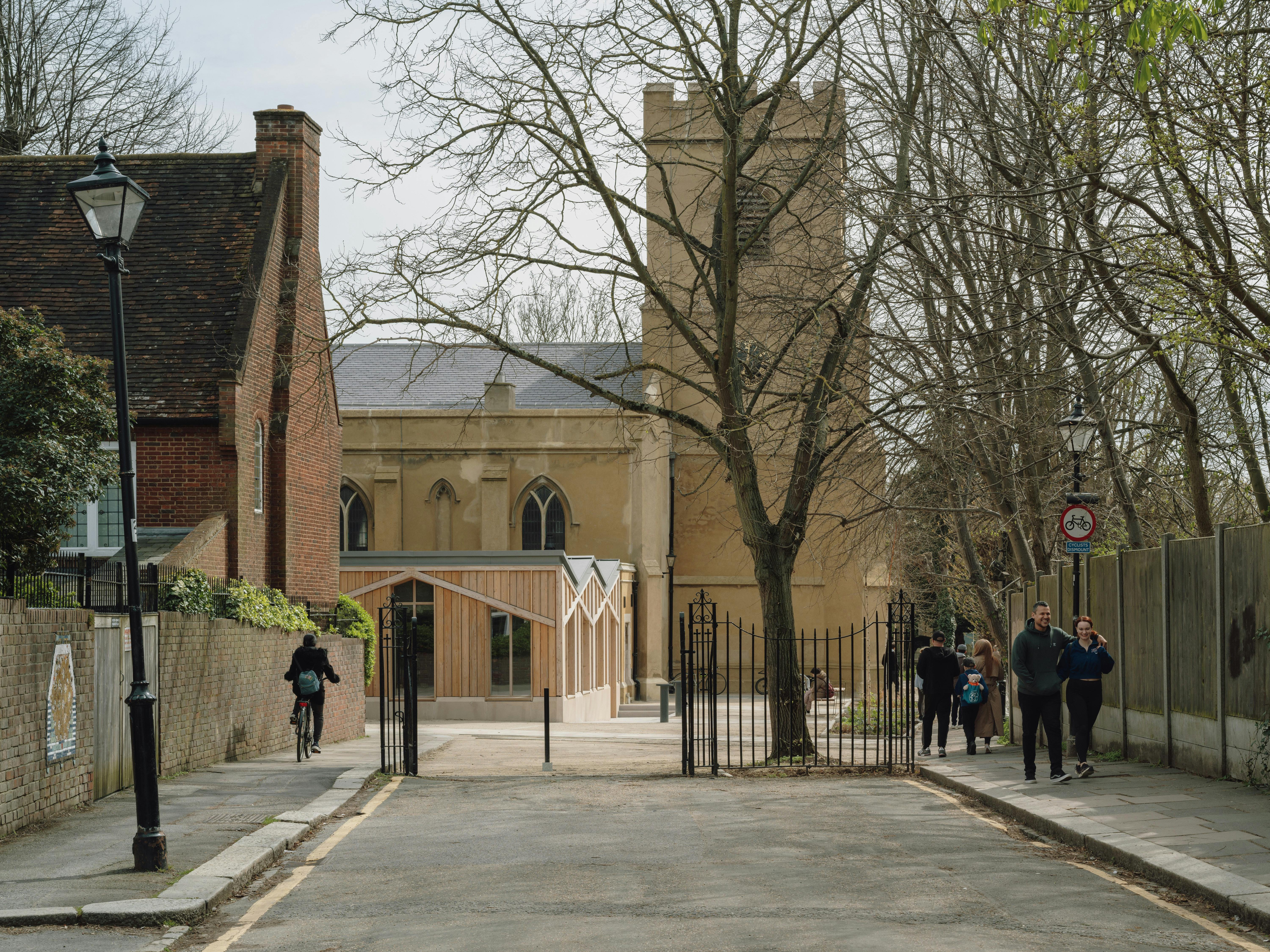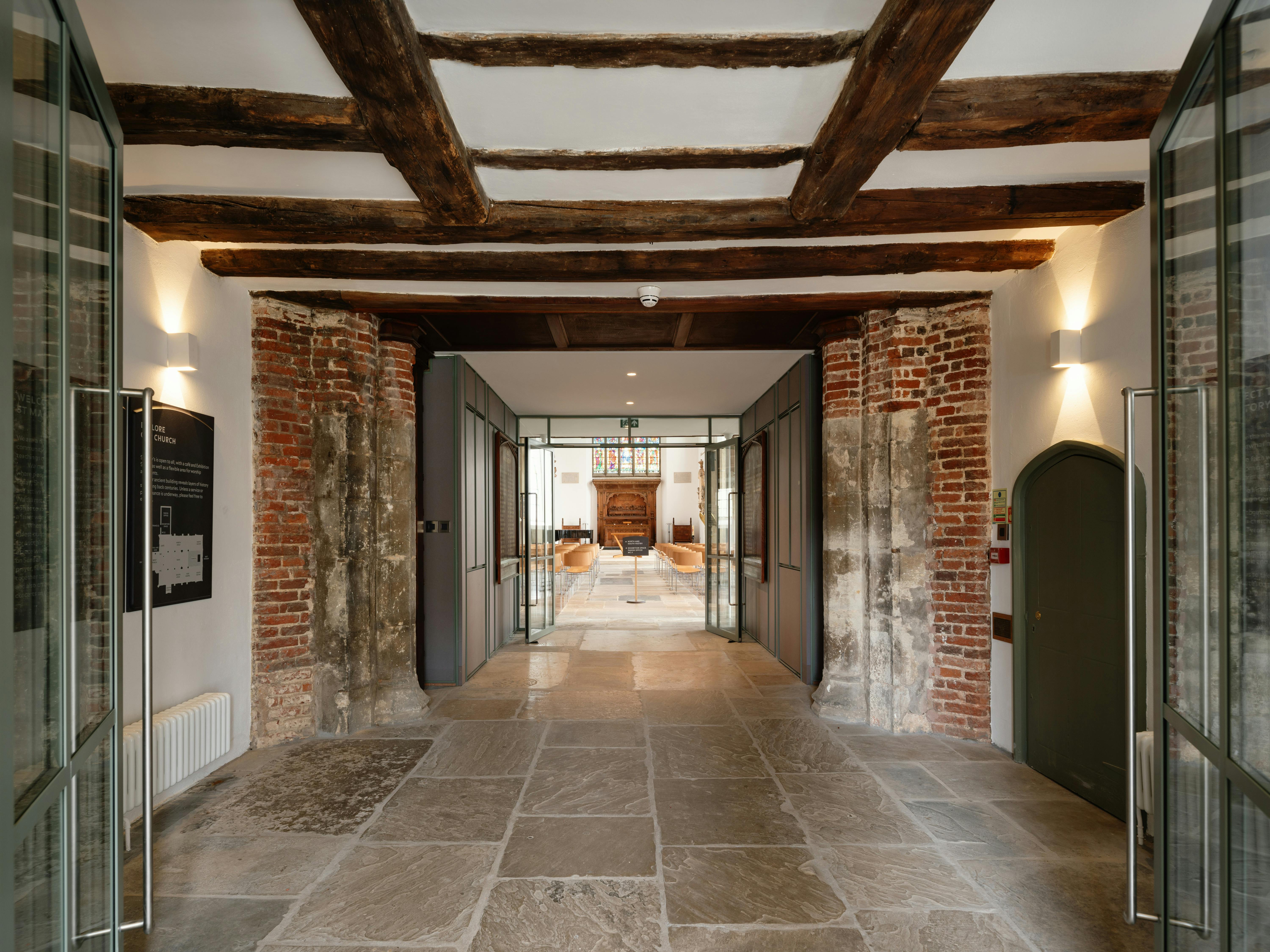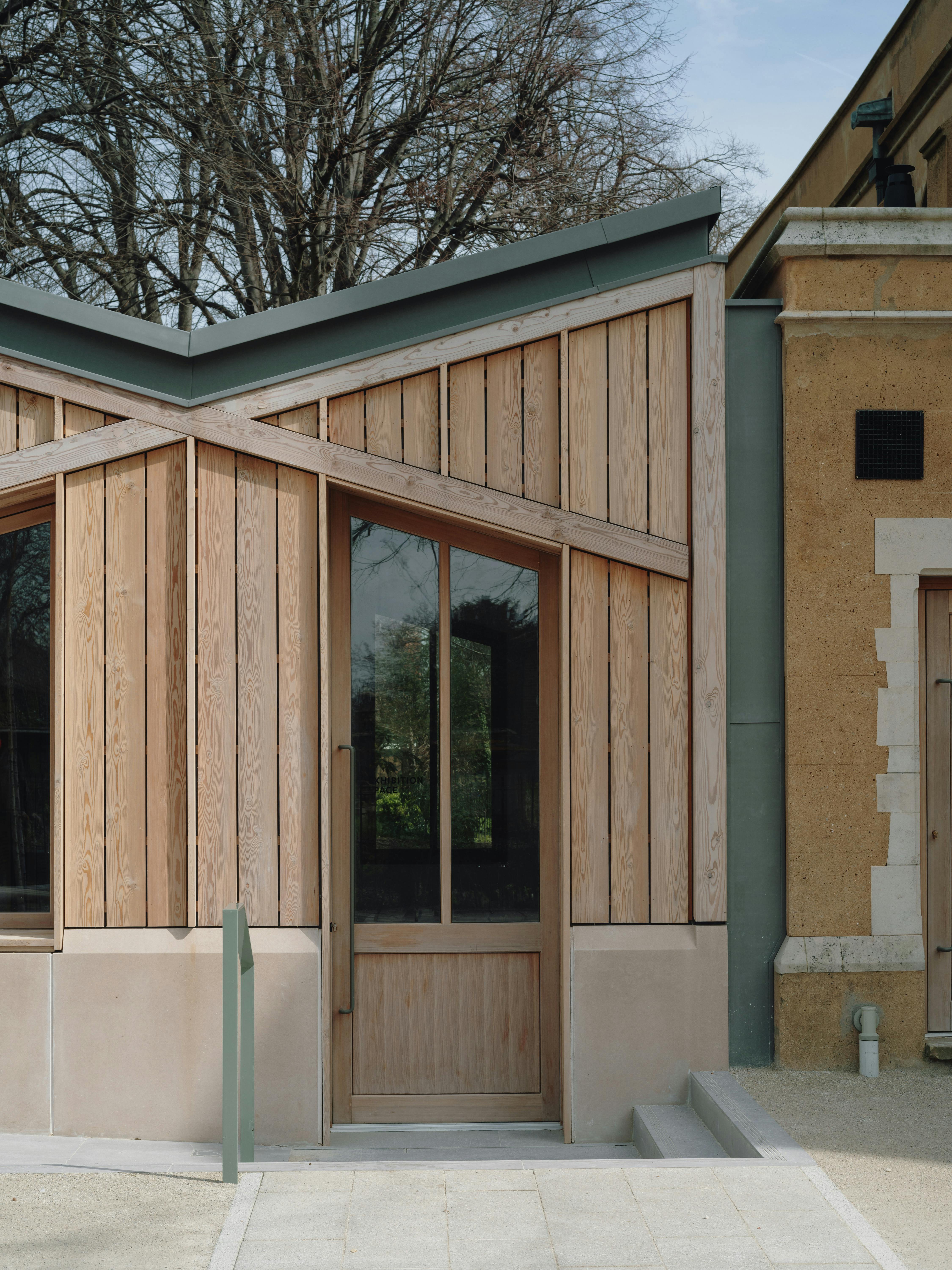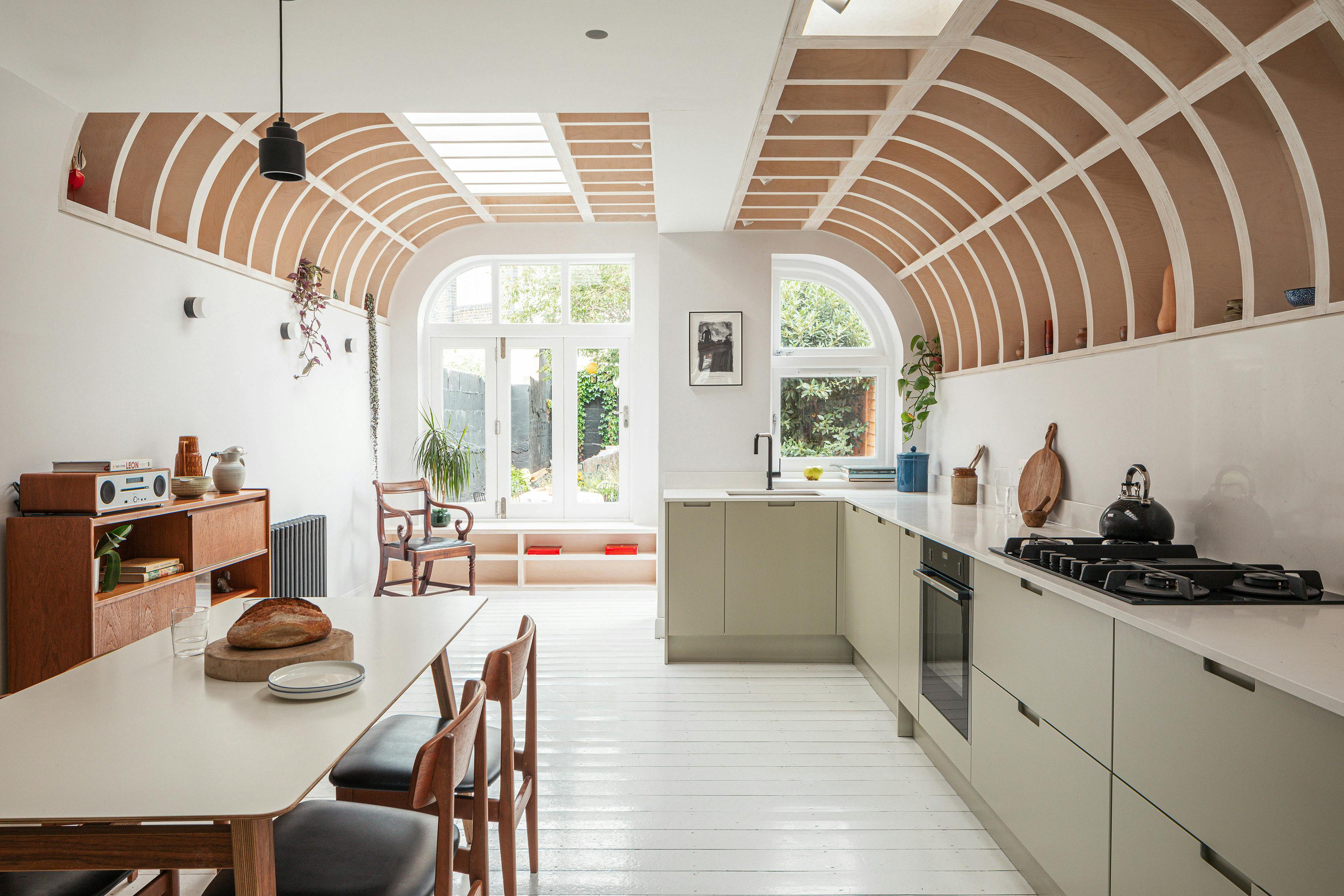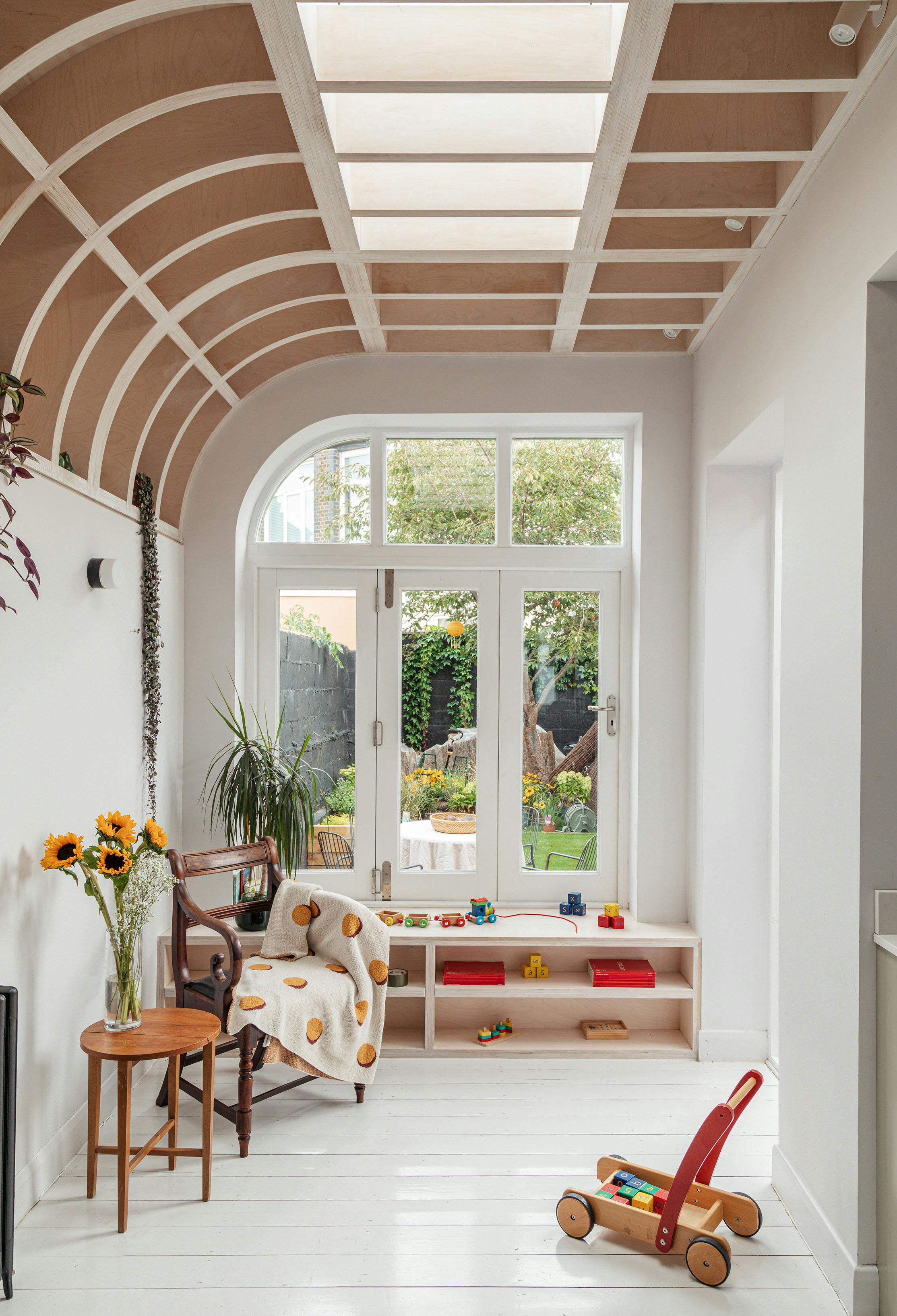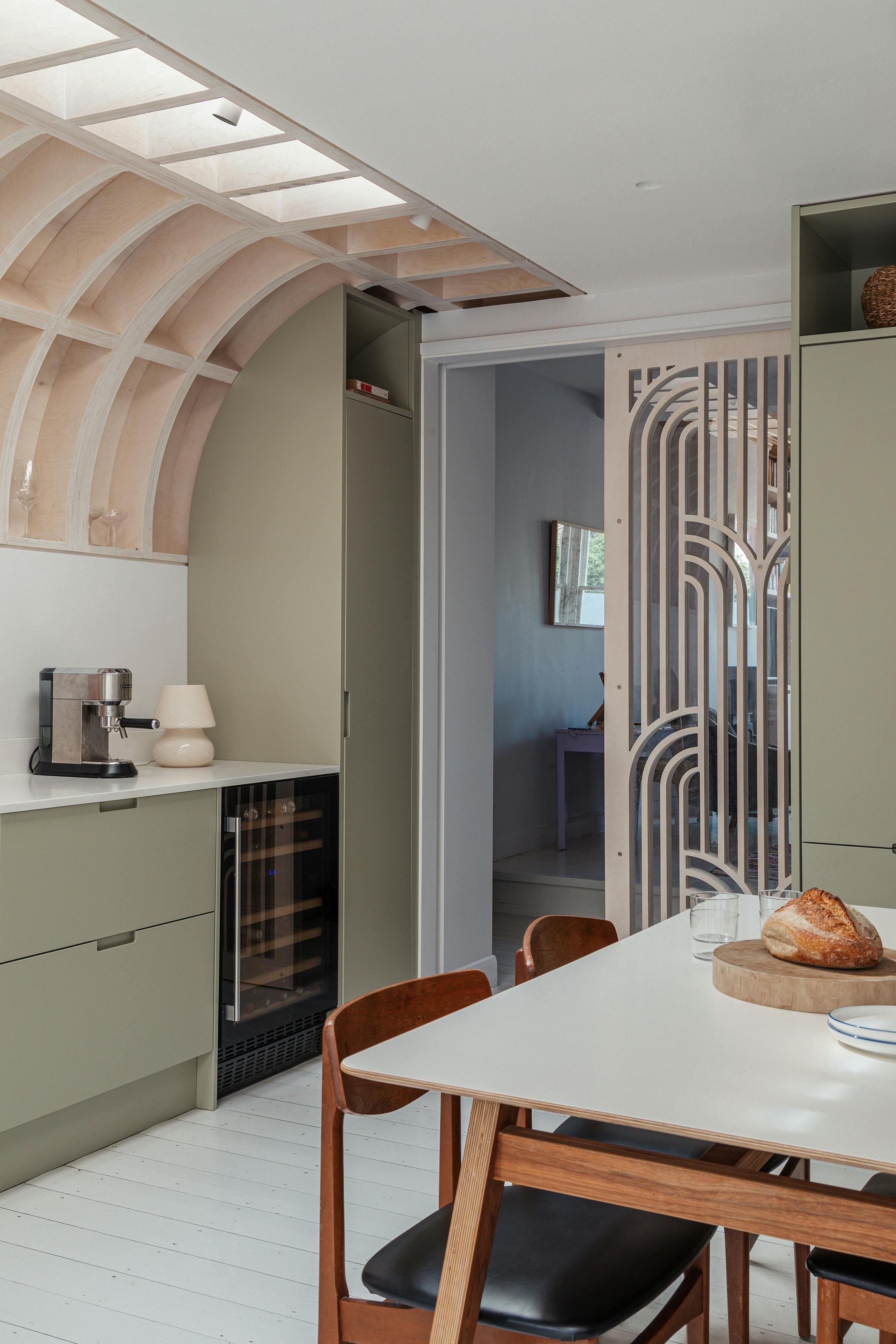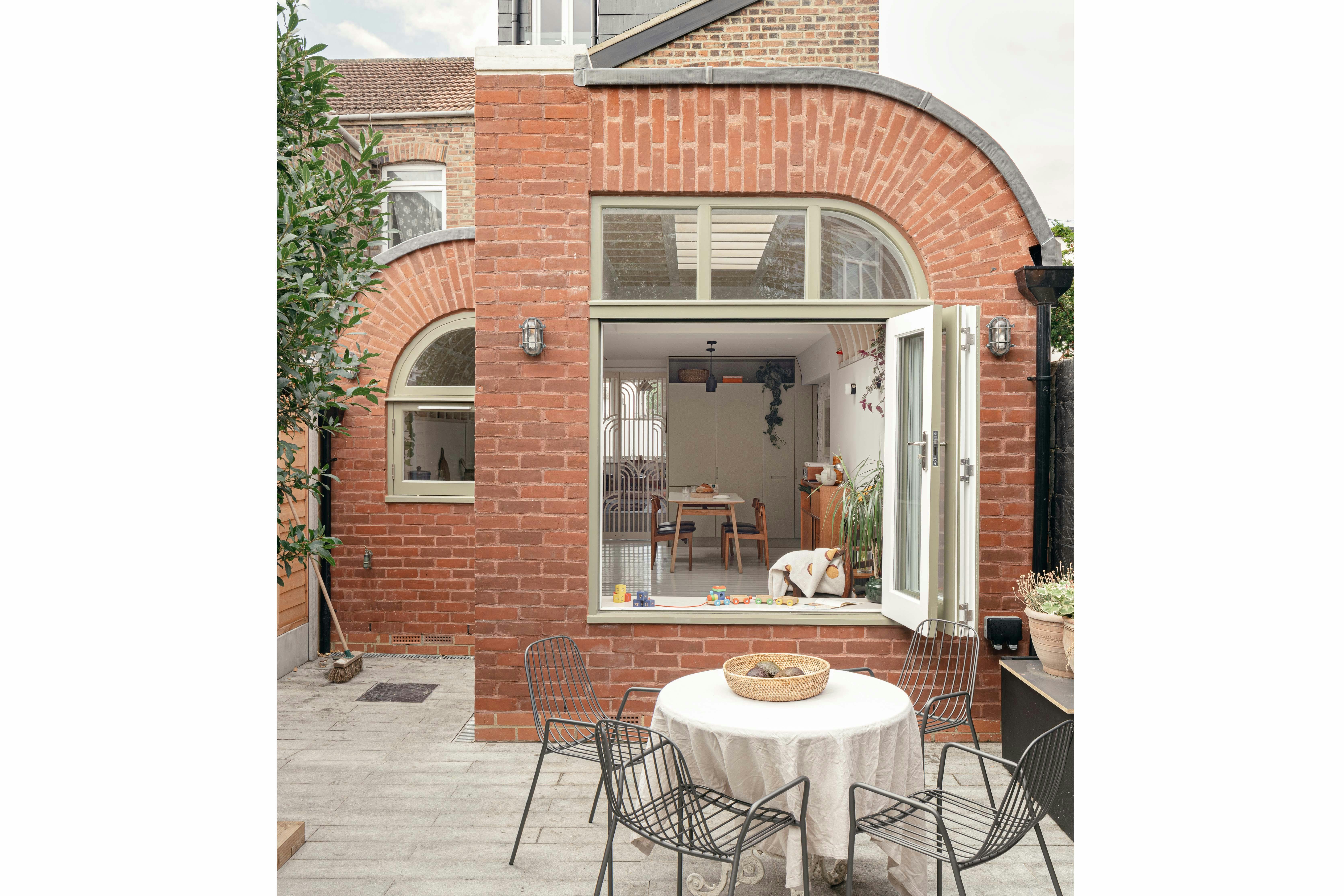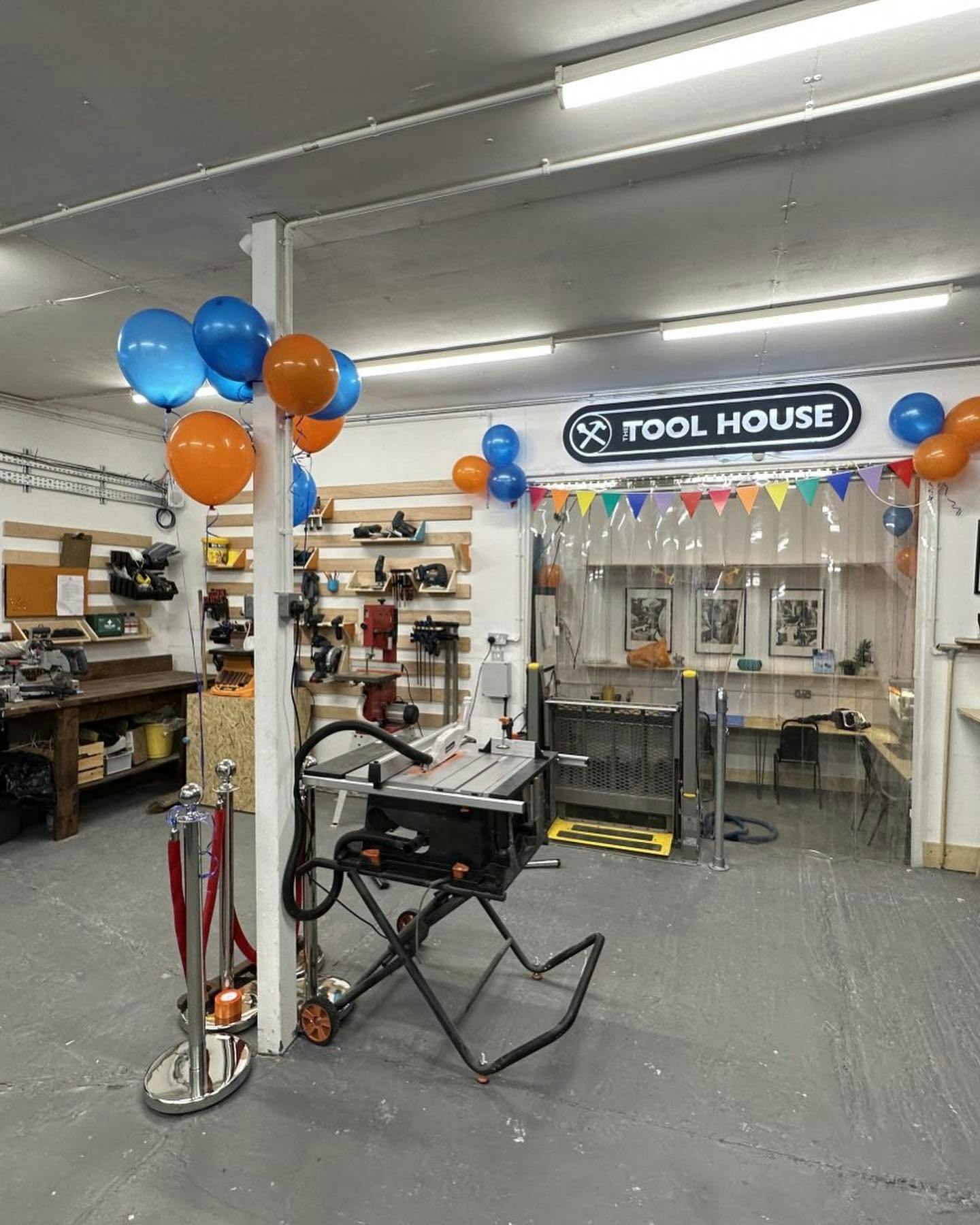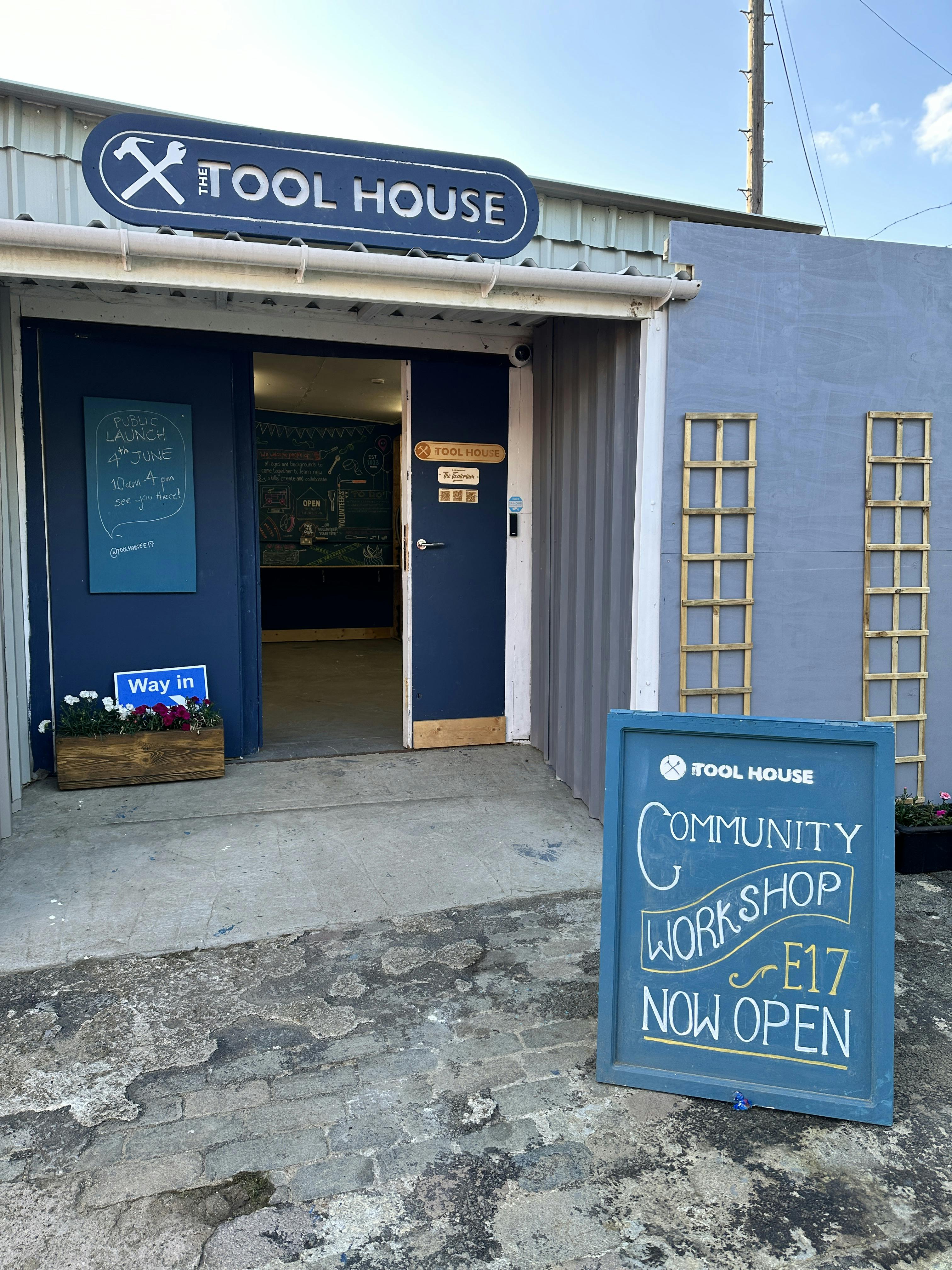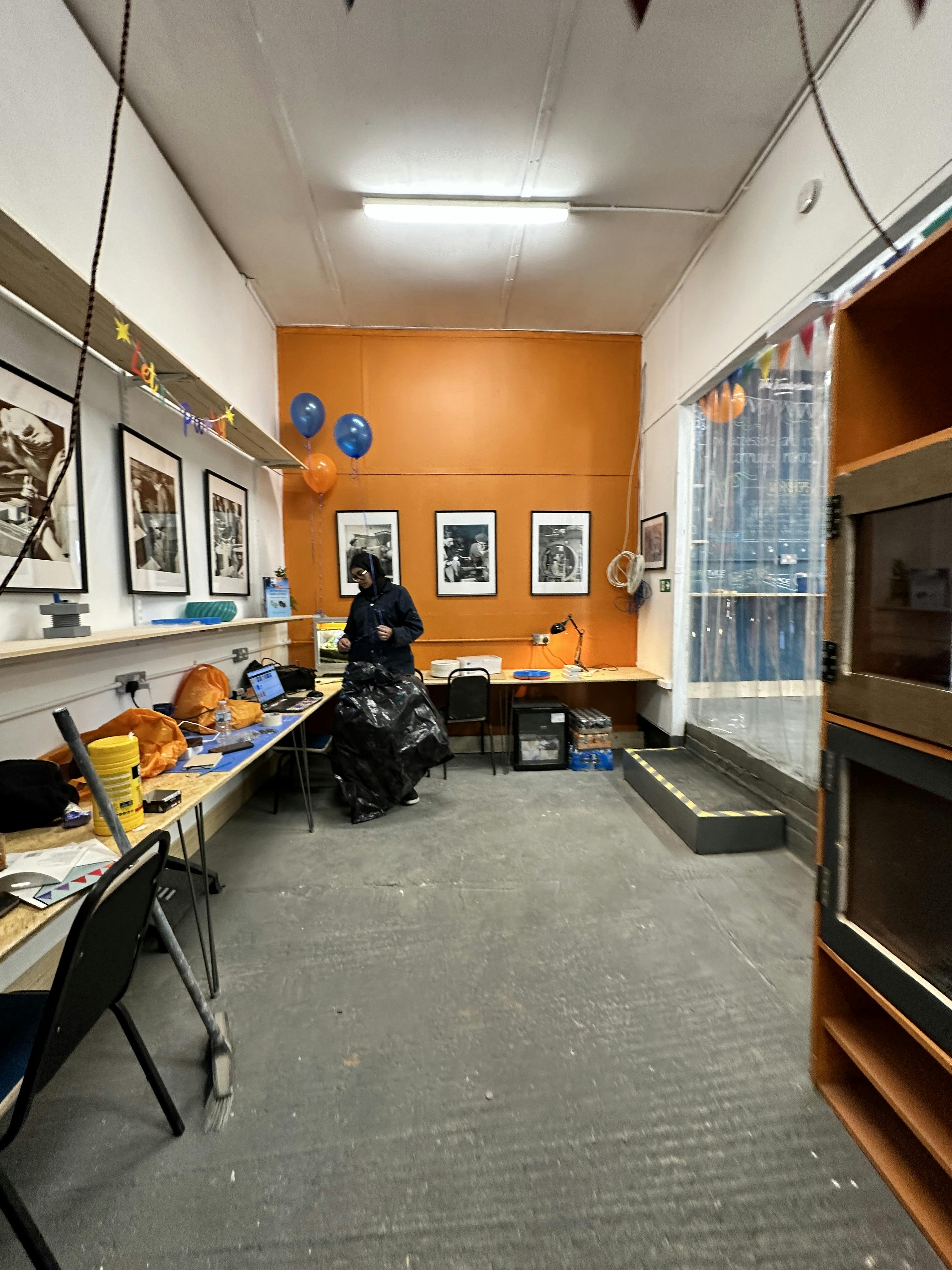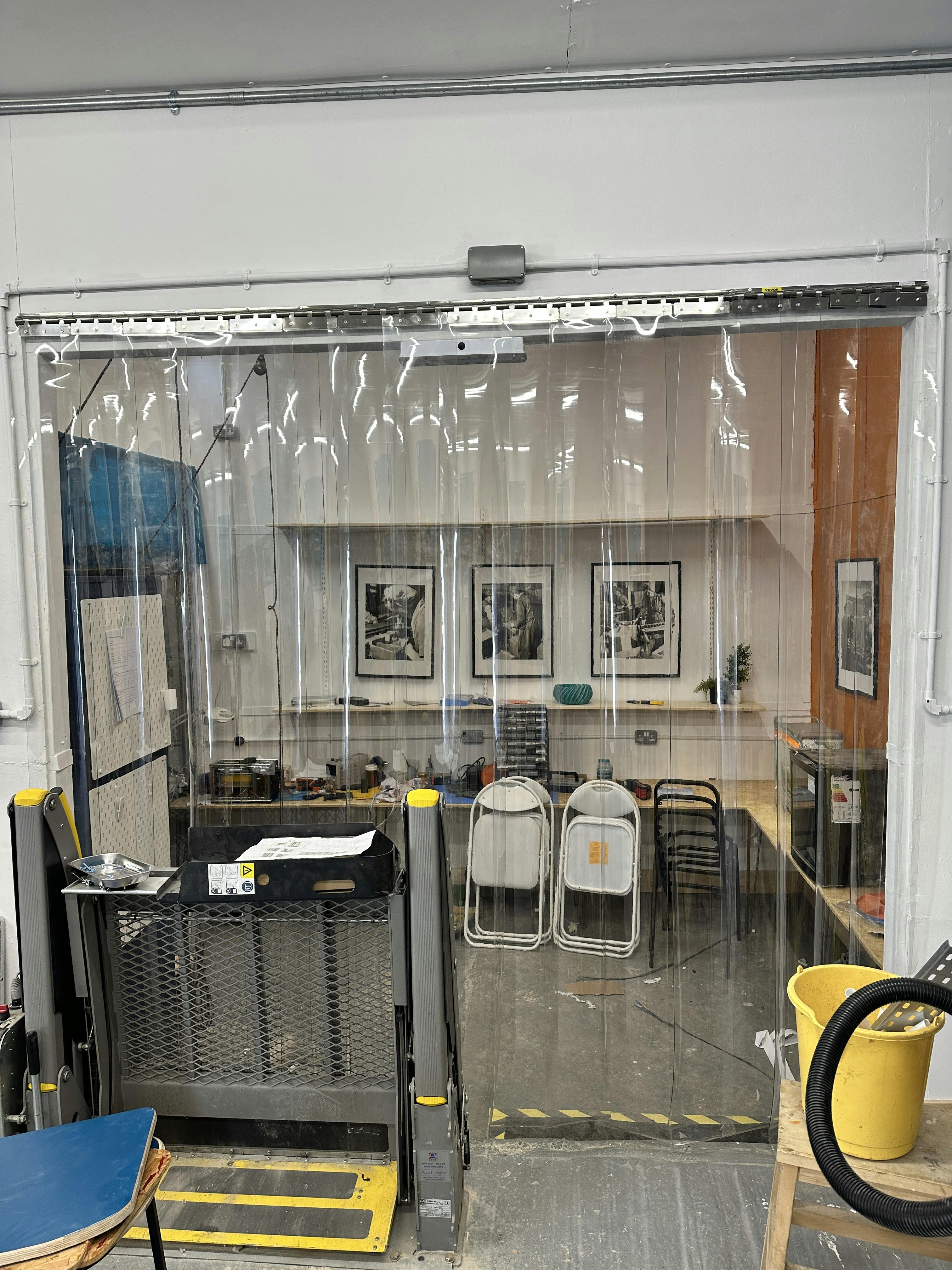2024 Shortlist
The following entries have been shortlisted by our design award judges. There are 11 shortlisted entries, ranging from public realm and landscape-led design to tall buildings, home extensions and community spaces. These proposals all achieve Exemplar Design, which was a key requirement in order to reach this stage in the process.
 Shortlisted Schemes - see gallery for more images
Shortlisted Schemes - see gallery for more imagesShortlisted Entries
Christopher Robbins Woodland Walk - Matter Architects
Christopher Robbins Woodland Walk is a memorial trail in Leyton Jubilee Park designed to commemorate the late Cllr Christopher Robbins CBE and to provide a new educational activity in the park. The project consists of the trail, marked by a series of hand-cast infor pillars, an educational booklet and an avenue of beech trees planted by the Council. The woodland walk is a collaboration between Matter Architecture and artist Lucy Harrison, with illustrations by Matthew Pagett, graphic design by Claudia Schenk and in consultation with Christopher Robbins’ family, the Council Parks team and the local community.
Lucy Harrison, carried out research with local historians and wildlife experts to create the interpretations featured on the trail’s brass plaques. Engagement workshops were hosted with four local schools to explore the local history and natural environment of the park. The insights informed an educational booklet with interactive children’s activities was developed. The woodland walk covers three distinct habitats of the southern part of the park: woodland, aquatic, and a wildflower meadow—carefully chosen to showcase the park’s ecological diversity. The pillars are made from layered concrete, cast from low-carbon cement, and recycled aggregate such as glass, brick and limestone. Small tread pieces with grit-blasted illustrations accompany the pillars.
Eastfield House - Gort Scott
Nestled behind the existing Grade 2 listed Central Parade estate in central Walthamstow, Eastfield House is a 100% affordable, five-storey mixed-use residential block with 167m2 of ground floor commercial space and 19 new homes. The design of Eastfield House is contemporay but pays homage to the existing Grade II listed Central Parade building. The distinctive ‘Festival of Britain’ style of the listed Central Parade building is reflected in the approach to massing, detailing and the choice of material palette of brick, pigmented concrete, and bespoke metalwork. The arched forms to the upper storey invoke the distinctive canopy and clock tower of the existing Central Parade, creating cohesion between the existing and the new and enhancing the estates overall unique identity.
The building was designed to creatively address issues of overlooking, multiple servicing requirements and different needs from a complex mix of existing users. The new courtyard amenity space offers a variety of functions, including improved service access for the local Central Parade businesses, disabled parking and a community garden with seating and planting for existing and new residents. Designing a well-lit space with secure access was important to existing residents who wanted to see a reduction in the anti-social behaviour in the area.
Forest House - AOC
Forest House is the extension and transformation of a semi-detached Victorian house on a tree-lined street in Highams Park, in Waltham Forest. After four years in the house the family of five wanted to retain the comfortable intimacy of the well-proportioned rooms but introduce the spatial generosity and experiential joy that they experience in the nearby Epping Forest. A single storey garage was removed and a set of new connected spaces wrapped around the side and rear of the house. A triple height space sits at the heart of the home, pushing out into a garden room, overlooked by a mezzanine studio, with an attic room perched above.
The stacked floors of the wraparound extension support family life by providing different spatial characters for different uses within one shared space. Enclosed by bomb-damaged brick walls and exposed blockwork the new living spaces have an external quality. Natural light from all angles bathes the interior in unexpected ways. Generous openings frame the garden, forest and sky, enhancing the connection with the outdoors. A large sliding window, above a douglas fir bench, runs the width of the extension allowing the interior to be opened up to the fragrant wild garden. Tall verbena and wildflowers brush against the windows and rainwater runs into a collecting fountain.
Jazz Yard - Bell Phillips
Jazz Yard is a mixed tenure development consisting of 83 new homes in South Grove and was developed by Sixty Bricks, the Council’s housing development company. Taking its name from the Jazz Rail Service which ran from Chingford to Walthamstow in the 1920s, the building occupies a former industrial site close to St James Street station and sits at the intersection of a new residential neighbourhood and workspace quarter. Rising to 12-storeys, Jazz Yard draws the elements of the wider St James Area Action Plan and is the result of successful engagement with key stakeholders during the design and delivery stages.
The scheme exhibits high-quality design that enhances its surrounding landscape. Inspired by the iconic Warner Homes that define the Walthamstow area, Jazz Yard features a combination of red brick and unique articulated brickwork distinguishing itself from the neighbouring housing schemes. Conceived as a landmark building, Jazz Yard sets a new standard in design excellence for upcoming mixed-use projects in the borough, and in particular the delivery of community amenities within the vicinity.
Juniper House - Pollard Thomas Edwards
The 16-storey tower is on a brownfield site opposite Walthamstow Central, one of the capital’s busiest local stations. It features 91 mixed-tenure homes and a nursery for over 50 local children. It contains two floors of classrooms, social space, and a winter garden for the Uni. of Portsmouth’s London campus. A ‘pocket park’ connects with adjacent residential streets providing a ground scape that is considerably more welcoming for pedestrians and cyclists. 41 homes (half the total) are affordable. 3 and 4 bedrooms family homes for rent have their own front doors; the scheme is car free - apart from blue badge parking.
Juniper mediates the high density station area with its emerging cluster of taller buildings and two-storey Edwardian terraces. The massing and form is expressed with two distinct architectural languages; an iridescent grey brick tower with a stacked grid of crisply articulated windows and precast frames that speaks to the town centre and a more domestic lower-rise undulating ‘tail’ with irregular openings in a red, buff brick. Juniper’s technical spec includes SuDS, smart meters, underfloor heating, mech ventilation and heat recovery. Fabric first design means energy performance outperforms the regs by more than 35 %. The nursery and commercial units are rated BREEAM Very Good. Lowcarbon heating is provided by communal air source heat pumps and PV panels.
Lea Bridge Library Pavilion - Studio Weave
The scheme is an extension to the Grade-II listed Lea Bridge Library, adding a cafe and adaptable community space with improved connections to the library’s gardens. It addresses the changing role of a library, conceiving a new wing that offers ‘human value’: places to work, learn, socialise, and gather – to deliver a revived civic space for the Borough. The new 250-square-metre wing sits to the rear of the Edwardian red brick library and engages lightly with the listed setting with materiality that complements the tonality of the historic context. The existing western garden wall anchors the structure and bulk of the building to one side, ensuring a seamless, open connection to the gardens surrounding it.
The design sits amongst existing mature trees, with a rectangular footprint punctuated by cut outs coordinated with canopies and trunks. Midway along its length, the plan ‘pinches’ in and up to protect tree roots. This inflection in the plan - constructed with smooth sweeping concave glass – provides flexibility to divide the pavilion; adjacent to the concave centre-point is a concealed pivoting timber door which enables a flexible private events space. A valuable community asset while also future proofing a further revenue stream for the library. Internal joinery is low carbon using timber salvaged from trees felled on publicly owned streets and parks across London, the mix of species add a rich variety of textures and tones
Lea Valley Ice Centre - FaulknerBrowns Architects / LDA Design
Lee Valley Ice Centre is a new twin-pad ice facility on Lea Bridge Rd designed to replace and double the capacity of an existing, 37 year old and no longer fit for purpose single rink venue. The project includes two Olympic-sized ice rinks with space for 800 spectators, a 100-station gym, dance studios, community space and a café to support both the ice rinks and the surrounding Lee Valley Regional Park. It is the only venue with two Olympic sized rinks in the south of England and supports a full range of activities from competitive skating to public sessions, ice dancing, hockey and discos, gym classes and community engagement events.
The existing site is within Metropolitan Open Land with small parts of it also being a Site of Metropolitan Importance to Nature Conservation (SMINC). As a result, the project was also designed to sensitively support the ecological importance of its marshlands context and included a £1.5m landscape transformation designed by landscape architects LDA Design. Landscape works included 153 new trees and an innovative where treated ice melt water is reused for flushing WCs, irrigating plants and improving water quality levels in a nearby Ox Bow Lake to support the site’s biodiversity. Environmental features including an energy efficient ice refrigeration system, 313 solar panels, air source heat pumps and low-emissivity ceiling above the ice rinks, make Lee Valley Ice Centre the UK’s most sustainable ice facility.
Spruce House & Studio - ao-ft
Spruce House and Studio is a new-build home and self-contained garden studio constructed from cross-laminated timber (CLT) on an infill site in Walthamstow, East London. The project is in a Conservation Area on what used to be the village high street. Referencing the historic origins of the site and neighbouring properties, we asked ‘what is a contemporary residential shop front’. This led to the development of the front façade’s proportions, alignment, and full width glazing with timber privacy screens across the ground floor. Replacing an existing 1960s infill in poor condition with no salvageable elements, led to the design of a home that minimised its carbon footprint through all aspects of its construction. The primary structure is built using CLT for its environmental performance credentials and aesthetics as an exposed internal finish. A peaceful garden links the house and studio.
Replacing an existing 1960s infill in poor condition with no salvageable elements, led to the design of a home that minimised its carbon footprint through all aspects of its construction. The primary structure is built using CLT for its environmental performance credentials and aesthetics as an exposed internal finish. A peaceful garden links the house and studio. The design approach focused on creating generous open spaces within a traditional Victorian footprint through layering, reduction and embedding of multiple functions within interior elements. The ground floor is lowered placing the occupants’ level with the garden, built-in joinery conceals multiple functions allowing seamless views throughout. The staircase is composed of interlocking treads that allow light and air to pass through the steel perforations from the openable skylight above.
St Mary’s Walthamstow - Matthew Lloyd Architects
A regenerative project that has enabled the parish to plan for the future of their medieval Grade II* listed church whilst securing sustainable community outreach. The overall result is a working church firmly at the centre of the community where all are warmly welcomed. The project includes repair, re-ordering and the addition of a modest extension. Community provision is increased in the extension with a gallery and inviting Parish Office, and in the historic spaces, where sensitive interventions enhance flexibility and accessibility e.g. fixed pews were replaced with flexible seating and underfloor heating to allow a range of activities. Layers of poor alterations were carefully removed to unveil the historic essence. Improved lighting, AV system and BoH provision accommodate a range of arts uses. The two vestries have been renovated as flexible spaces and a new staircase improves gallery accessibility.
Extensive repairs were carried using appropriate like-for-like materials and traditional skills in accordance with conservation best practice, retaining as much of the original fabric as possible with limited necessary interventions. A material palette of zinc, larch and reconstituted stone reinforces the design approach; the distinctly contemporary result sits comfortably in the historic context. A new forecourt with mature trees and planting beds replaces a car park linking historic pathways through the churchyard with the streets beyond.
Tennyson Road - ROAR
ROAR has dramatically overhauled a family home in Walthamstow, London using new technologies and innovative design methods to create a bright and spacious extension. It simultaneously tackles the day-to-day needs of the client while making the most of local planning conditions to provide the most floor area and ceiling heights possible. The owners of this property asked for a radical rethink of their house to be achieved within the confines of a modest budget. ROAR’s solution included the creation of two volumes which provide a generous and flexible space for people to gather within.
Inspired by the history of grand architectural gathering spaces and ship-building techniques, a vaulted roof was developed from the need to achieve a dramatic, playful space with the best ceiling heights possible, whilst fitting within the planning constraints of eaves and roof heights set by the LA with consideration also of neighbours on a very tight site. Internally, this is expressed as a dramatic ceiling formed of CNC birch ply ribs with a ‘kit-ofparts’ approach to reduces time and waste when compared to a traditional build. A small nook at the base of each rib offers a little shelf for the family’s objects. Skylights cut into the structure to bring daylight deep within the plan and help animate the space throughout the day as the sun moves around house.
The Toolhouse - The Fixatorium and Walthamstow Pumphouse Museum
A transformative project that breathes new life into the historic Walthamstow Pumphouse Museum, redefining its role as a dynamic community hub. The space is a crafted extension of the museum, designed to break down traditional barriers to entry for a workshop and be inviting, exciting and approachable to a new audience. This project is a civic and cultural asset; a vibrant community infrastructure, fostering collaboration and skill-sharing. It’s a hands-on, accessible venue where the public gains unprecedented access to a diverse array of DIY tools, woodworking equipment, electronics stations, and 3D printing facilities. The space can be hired or accessed by volunteering time and the open workshop sessions with experienced volunteers are cheaper than other training providers in the area. Walls adorned with historic snapshots serve as a tribute to the region’s industrial legacy.
The space’s commitment to sustainability is evident in its promotion of the DIY culture, encouraging individuals to create, repair, and repurpose. This ethos aligns seamlessly with contemporary values of environmental consciousness and self-sufficiency, making the workshop a beacon for community-driven, eco-friendly practices.


